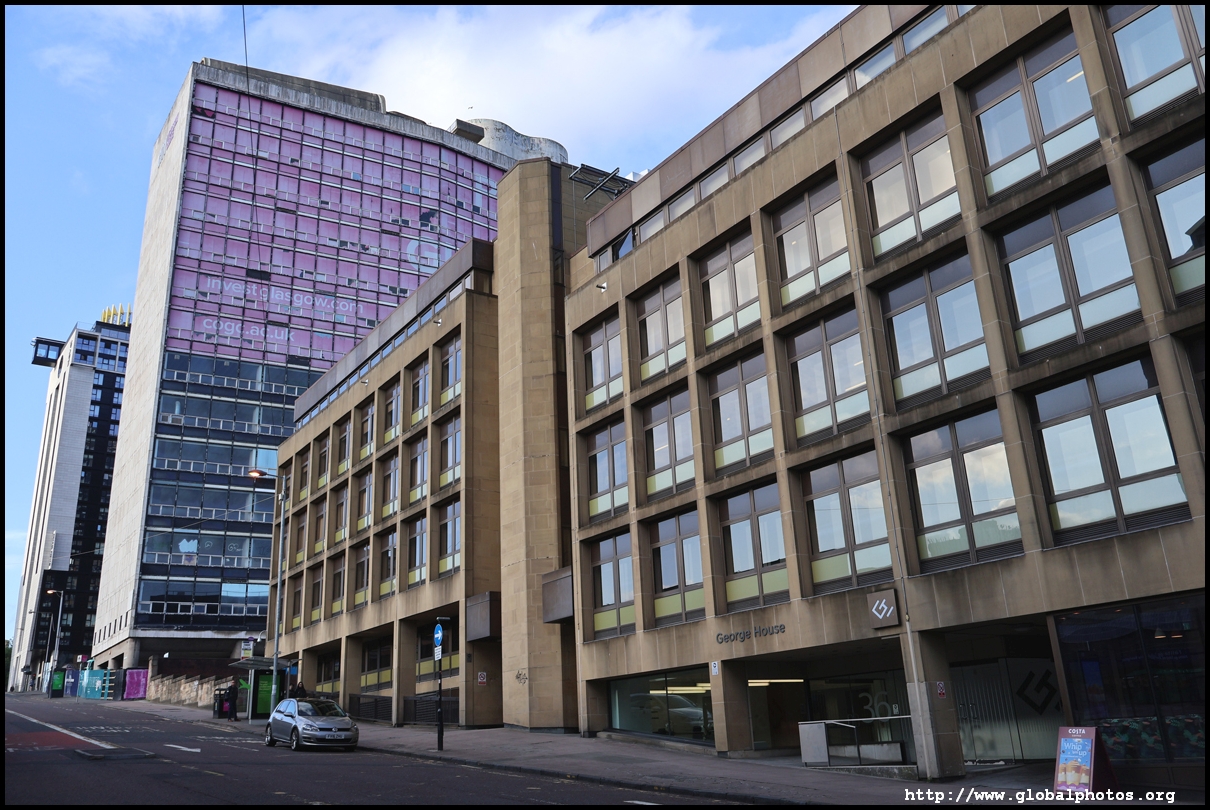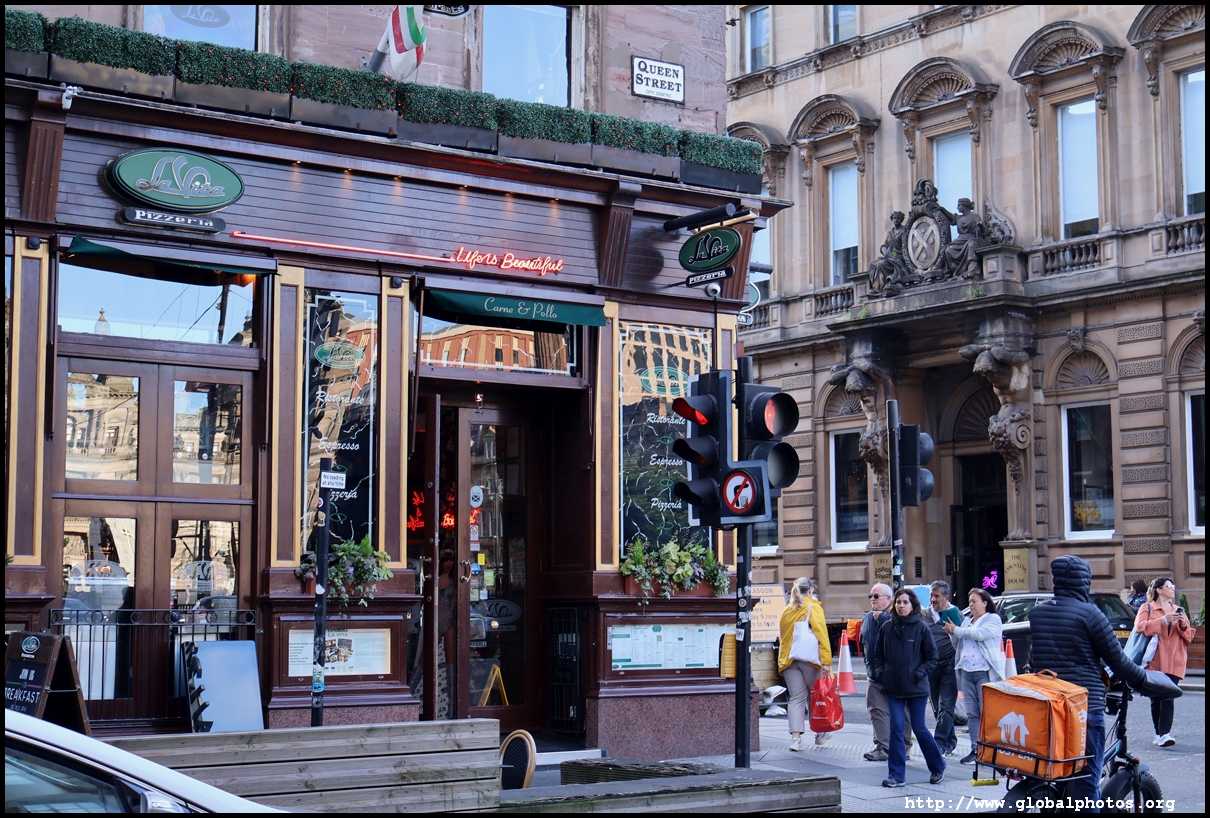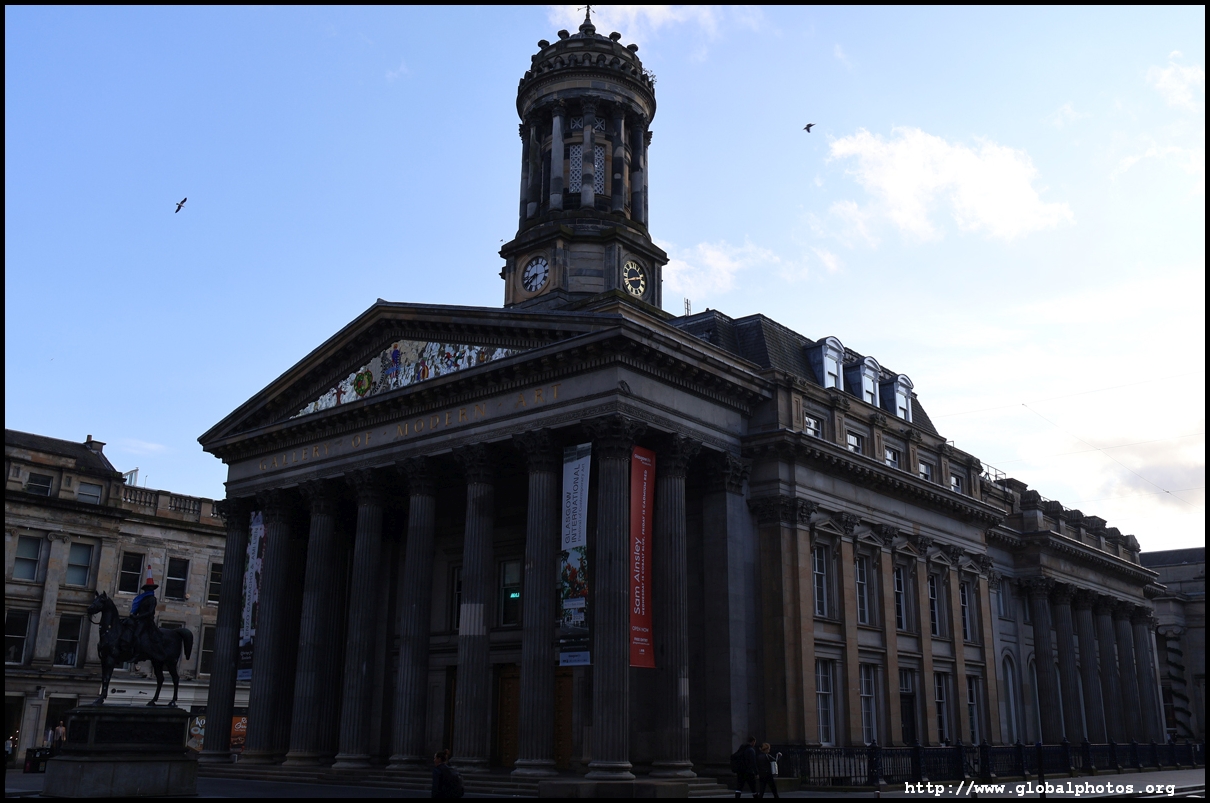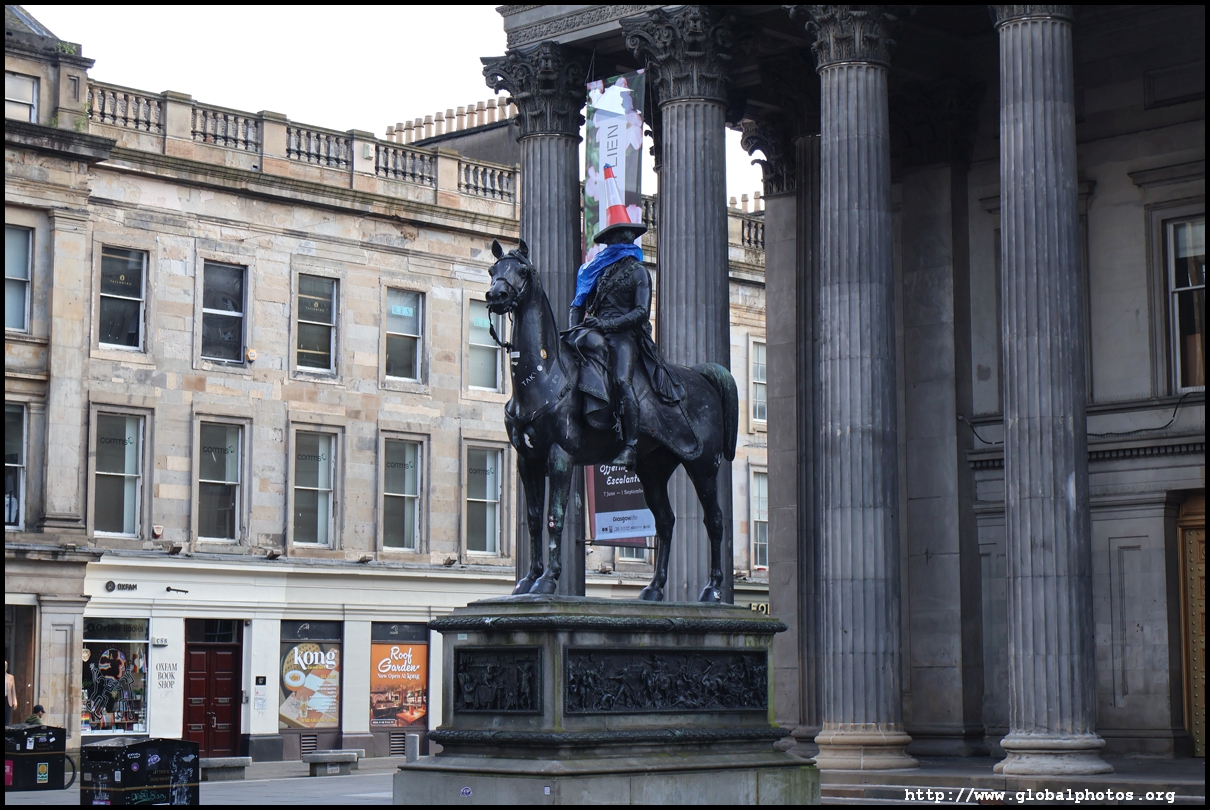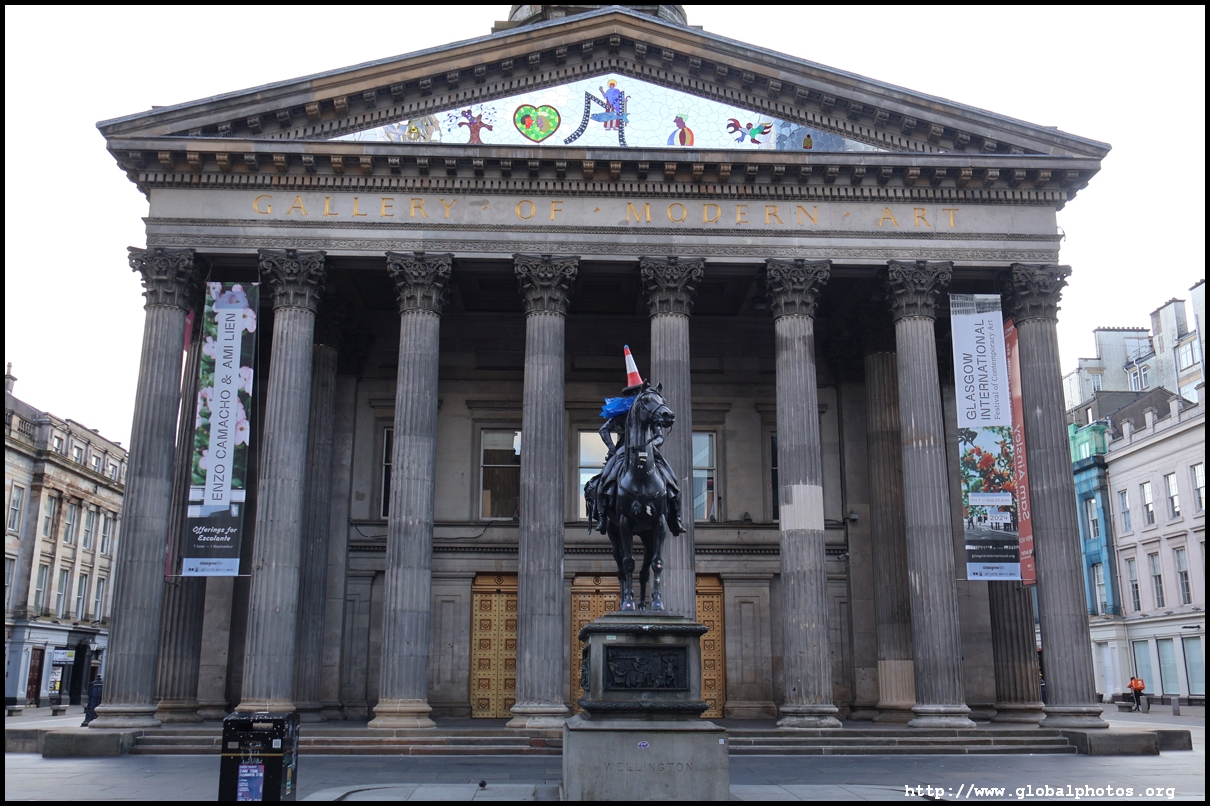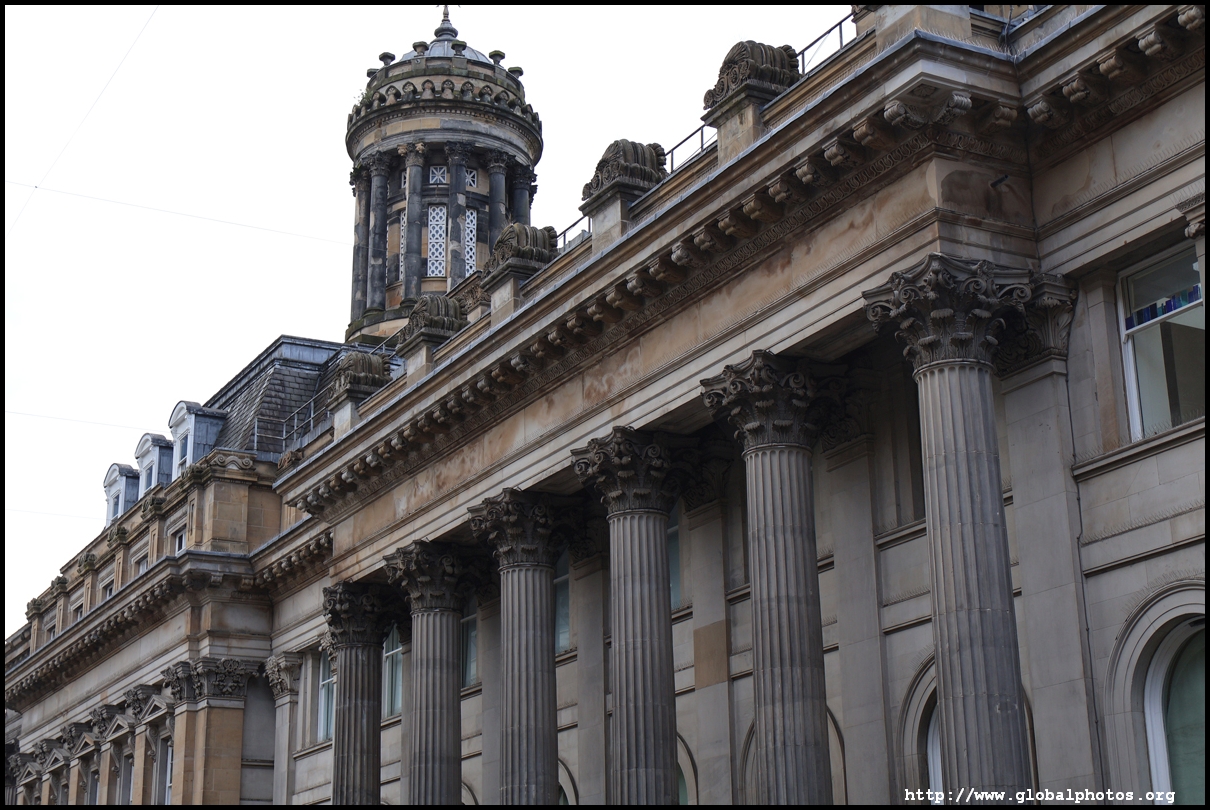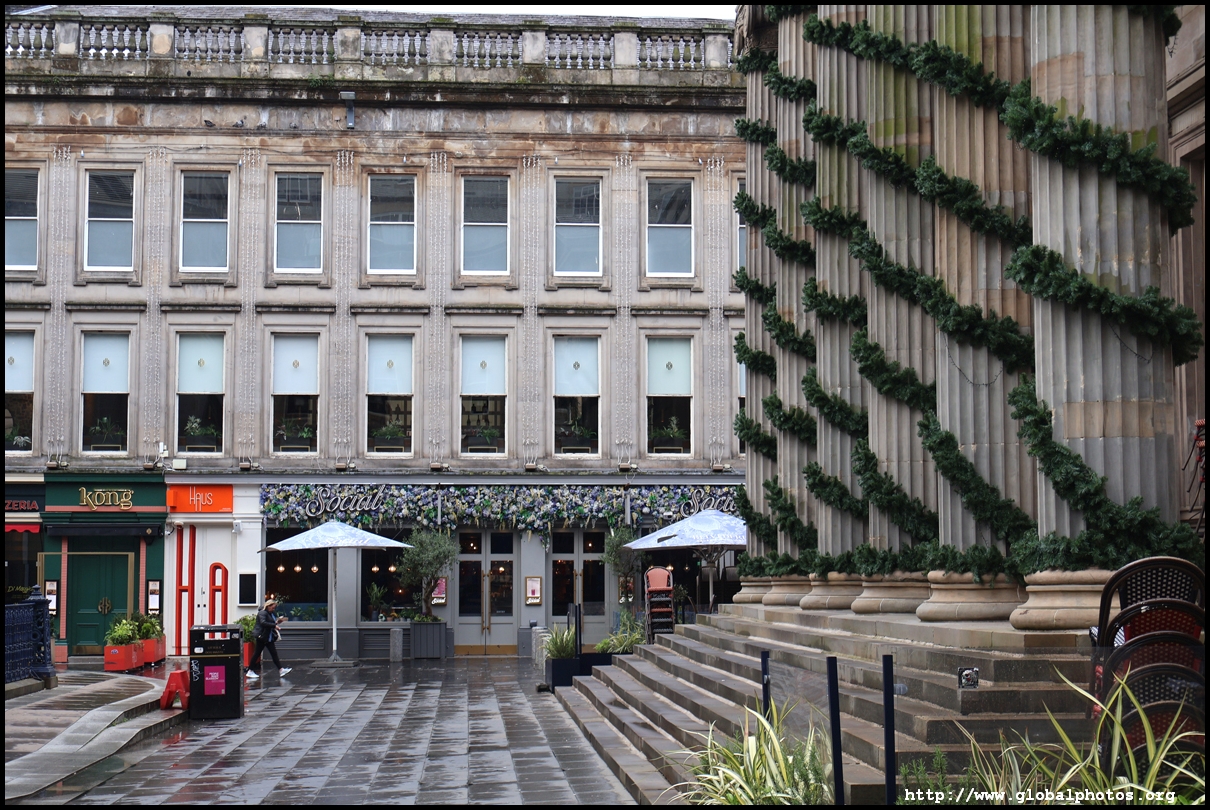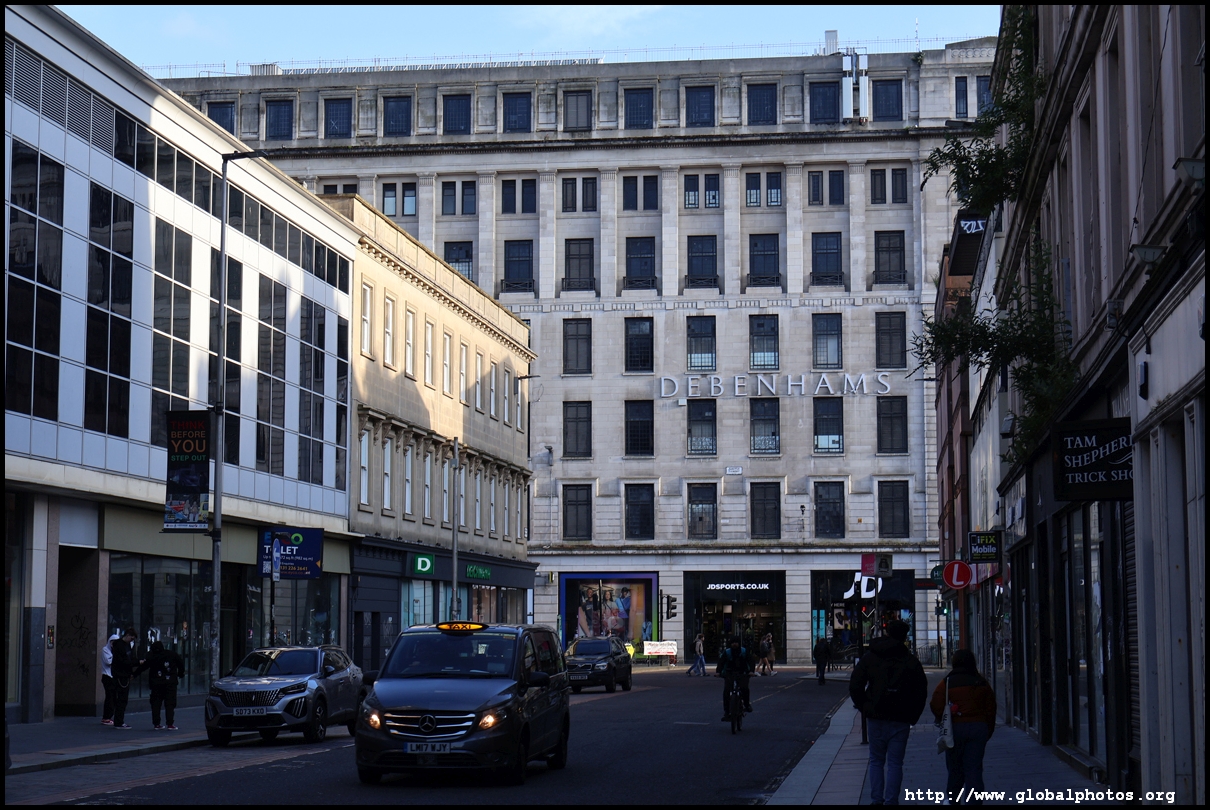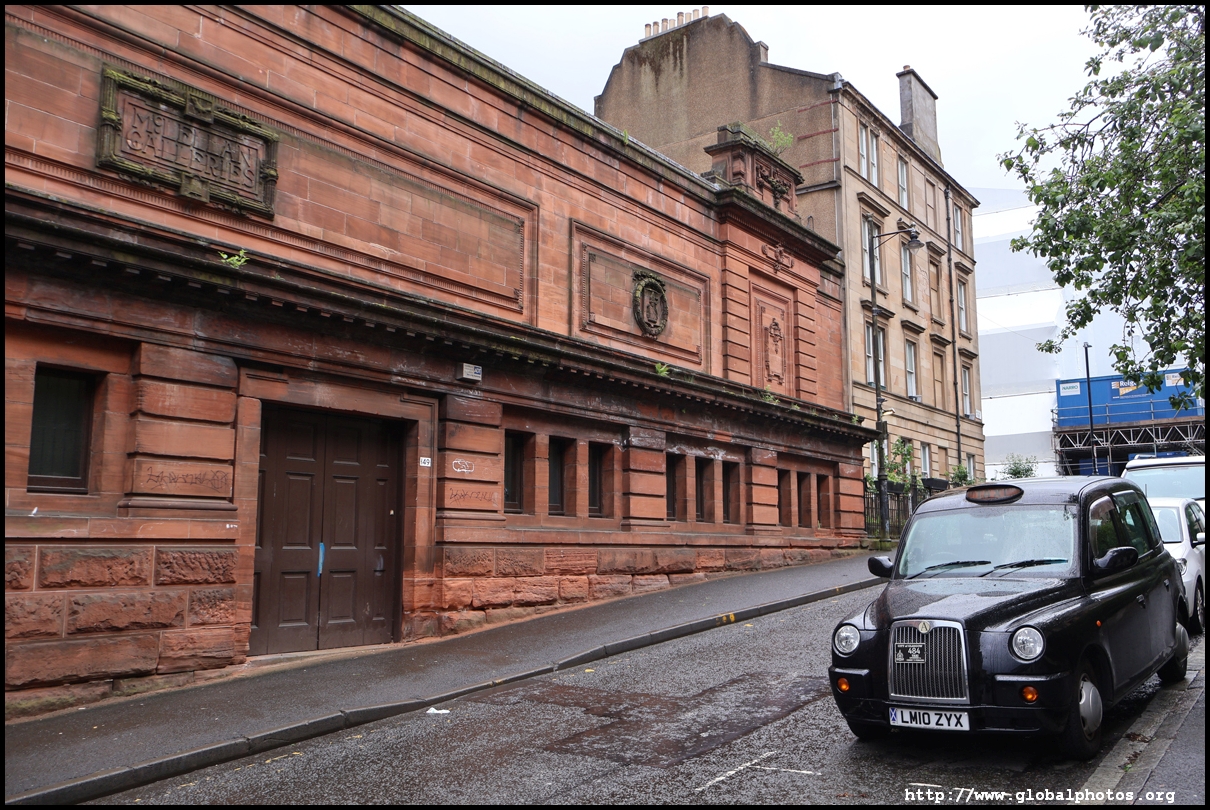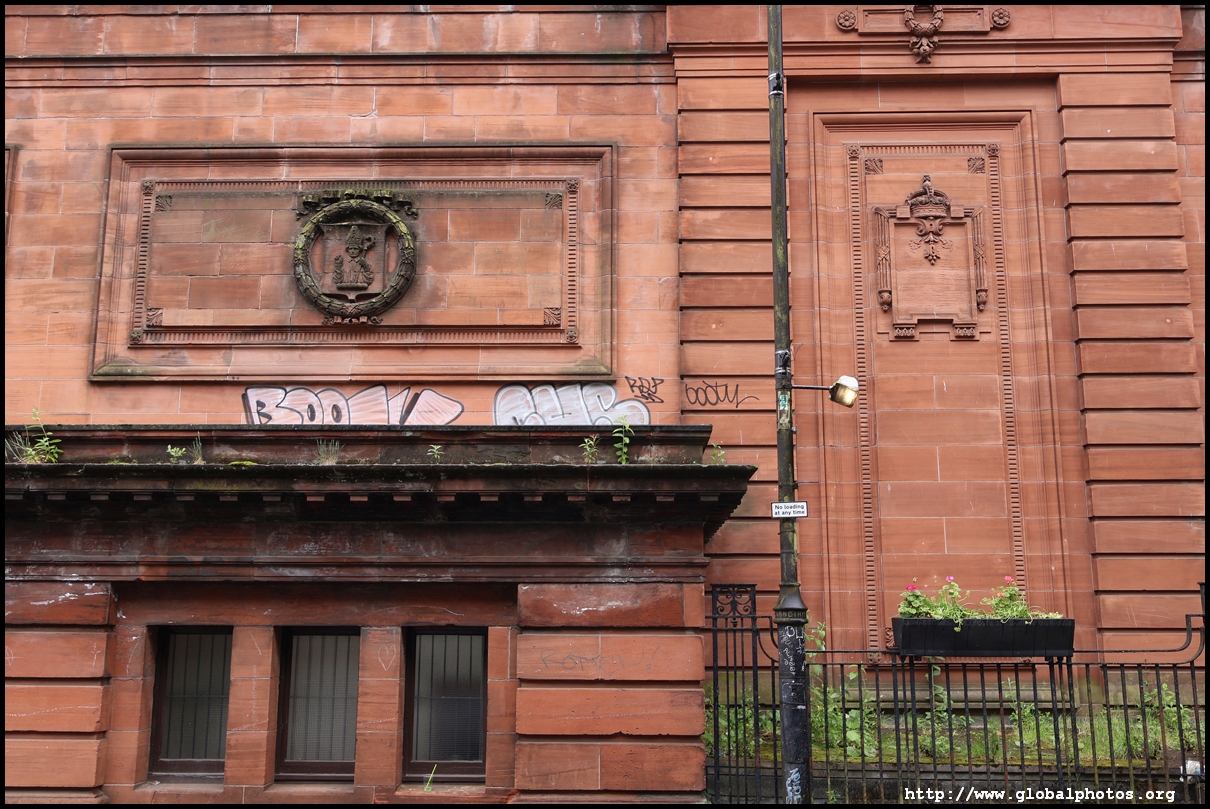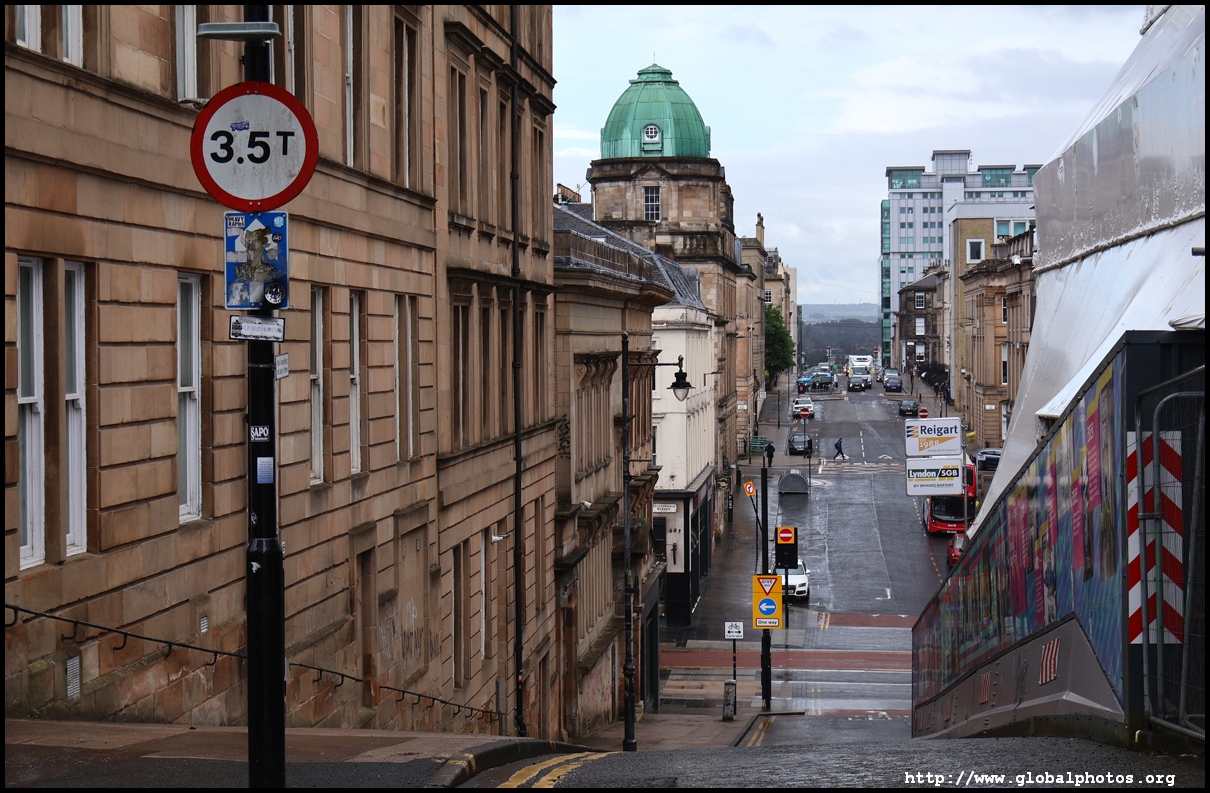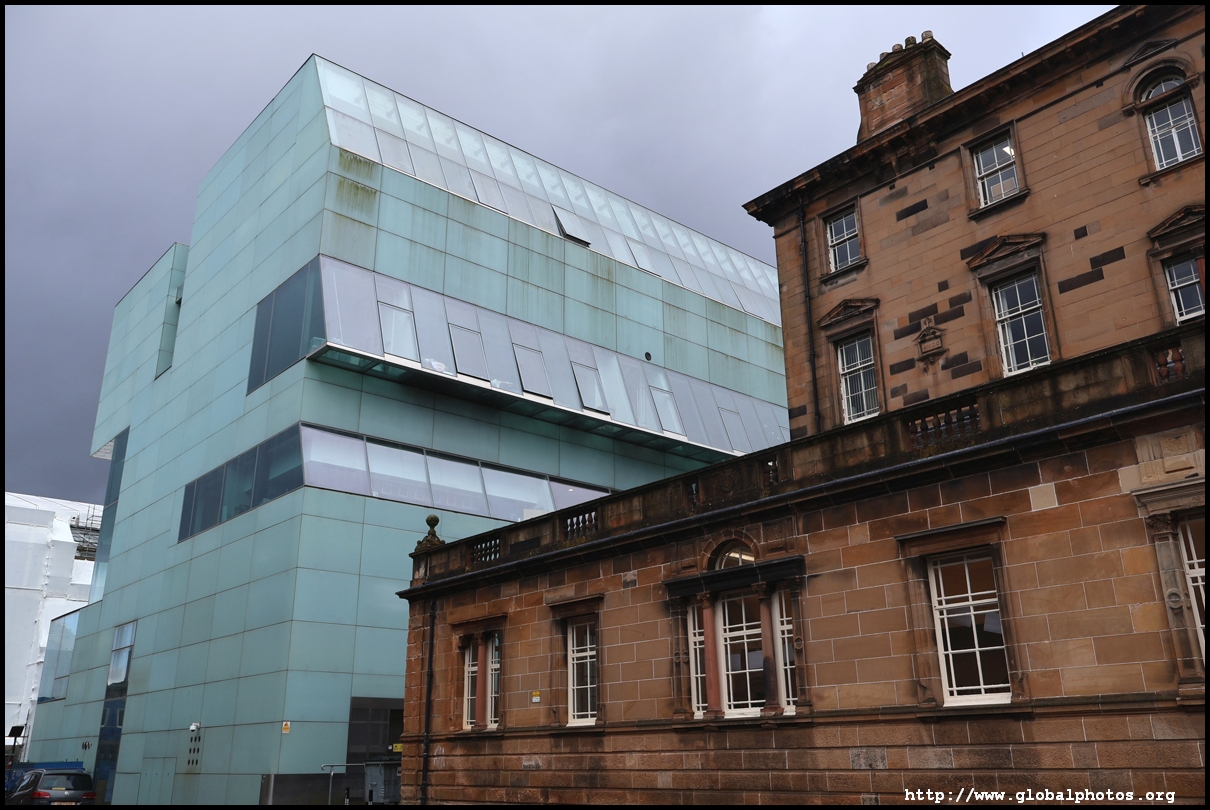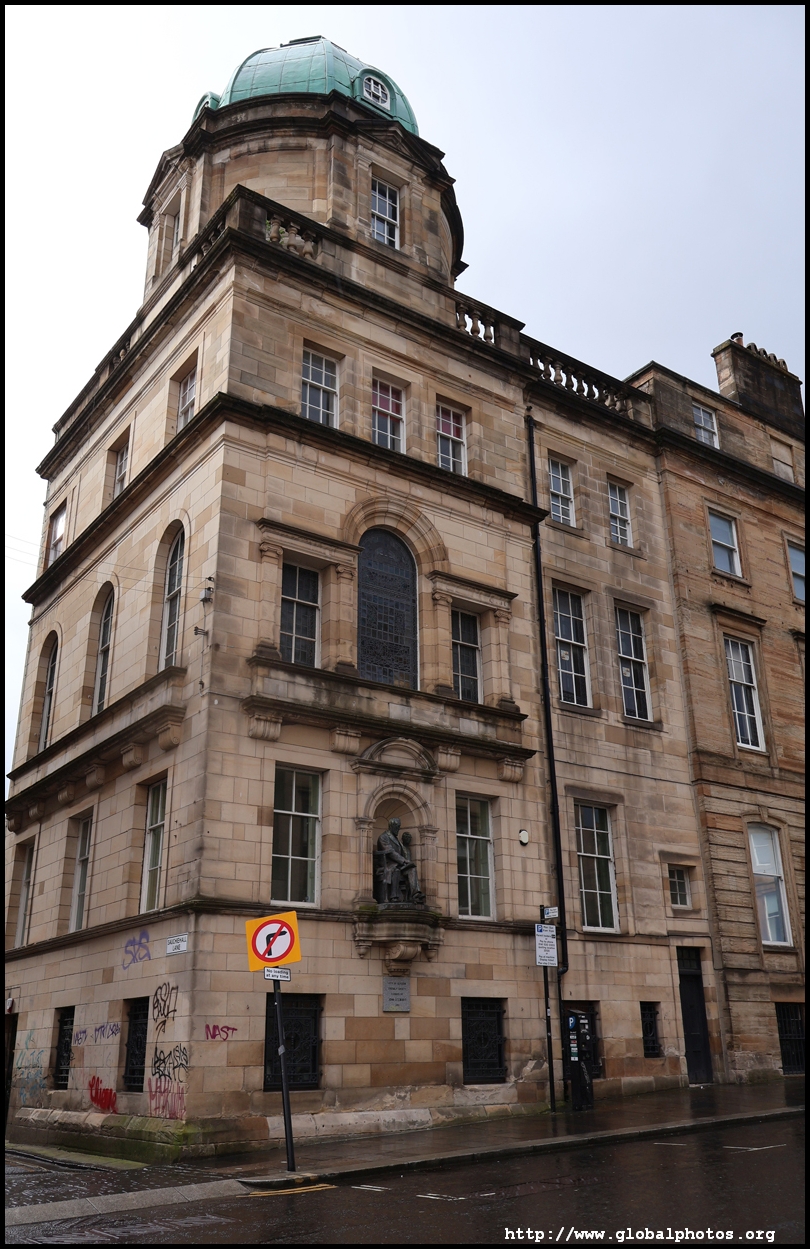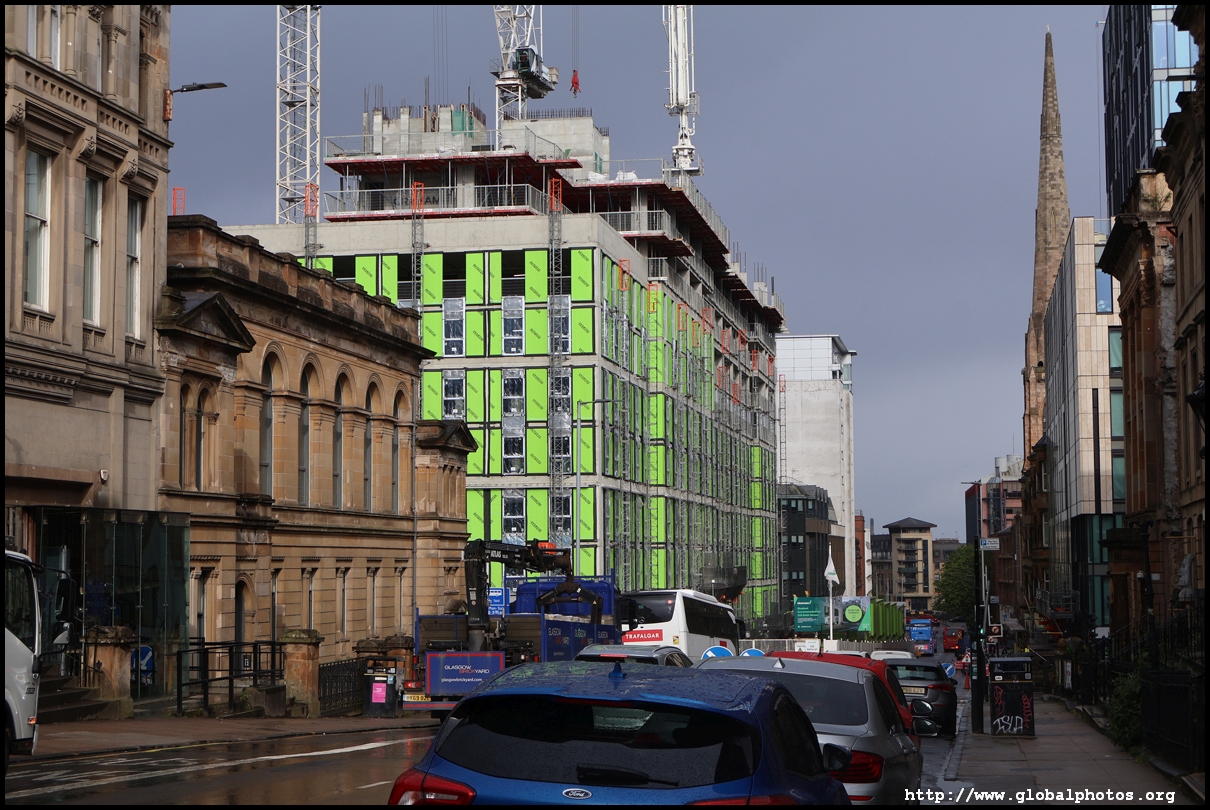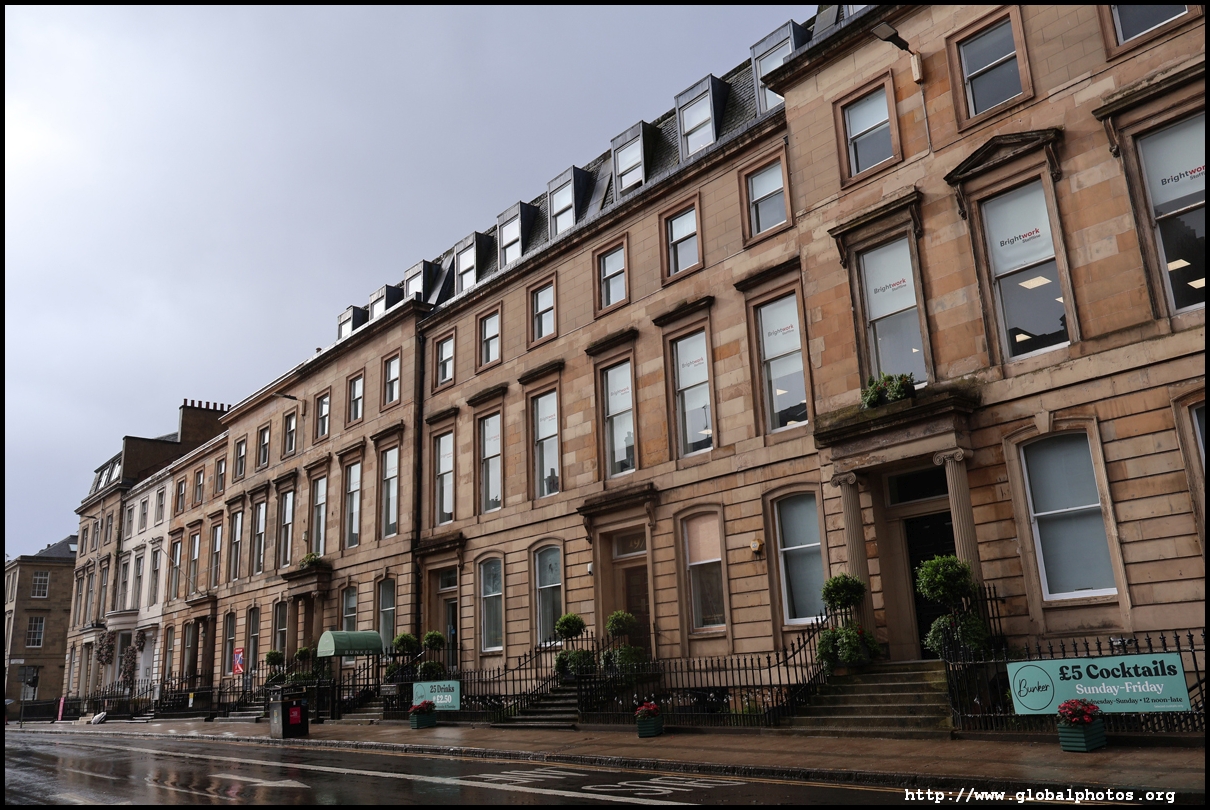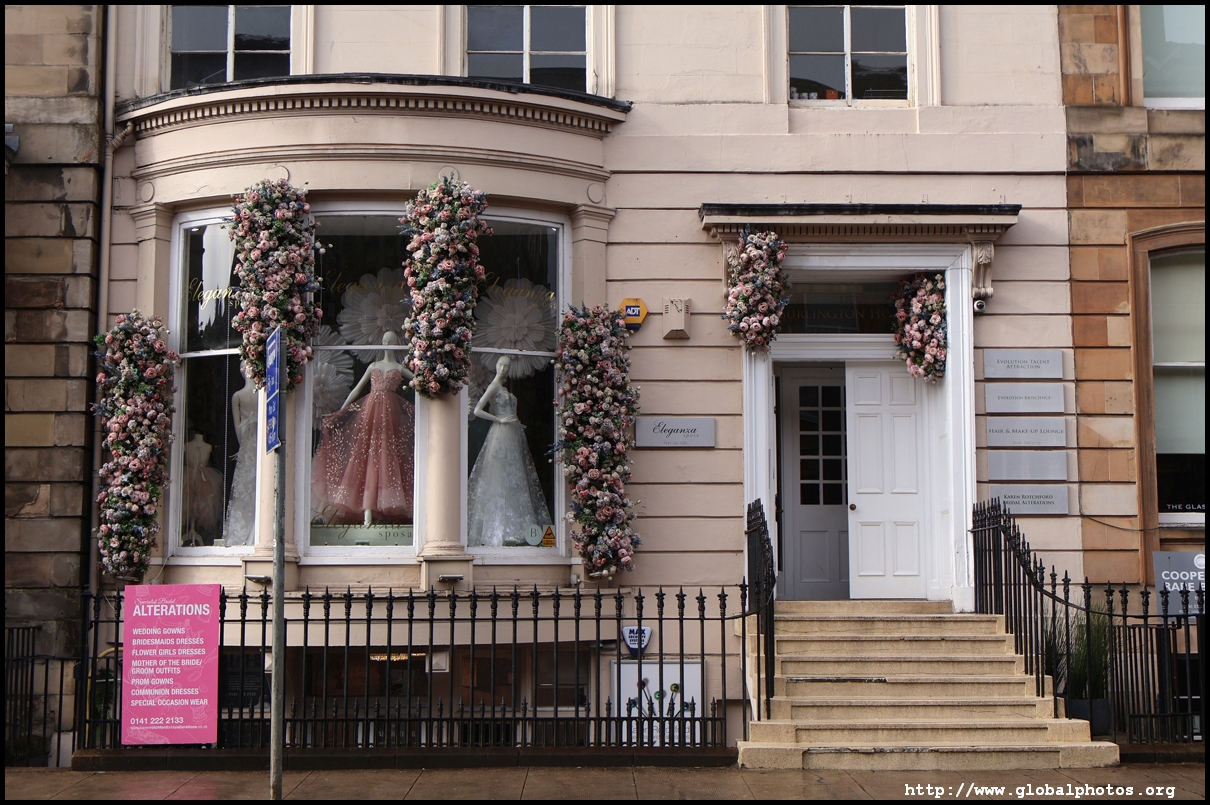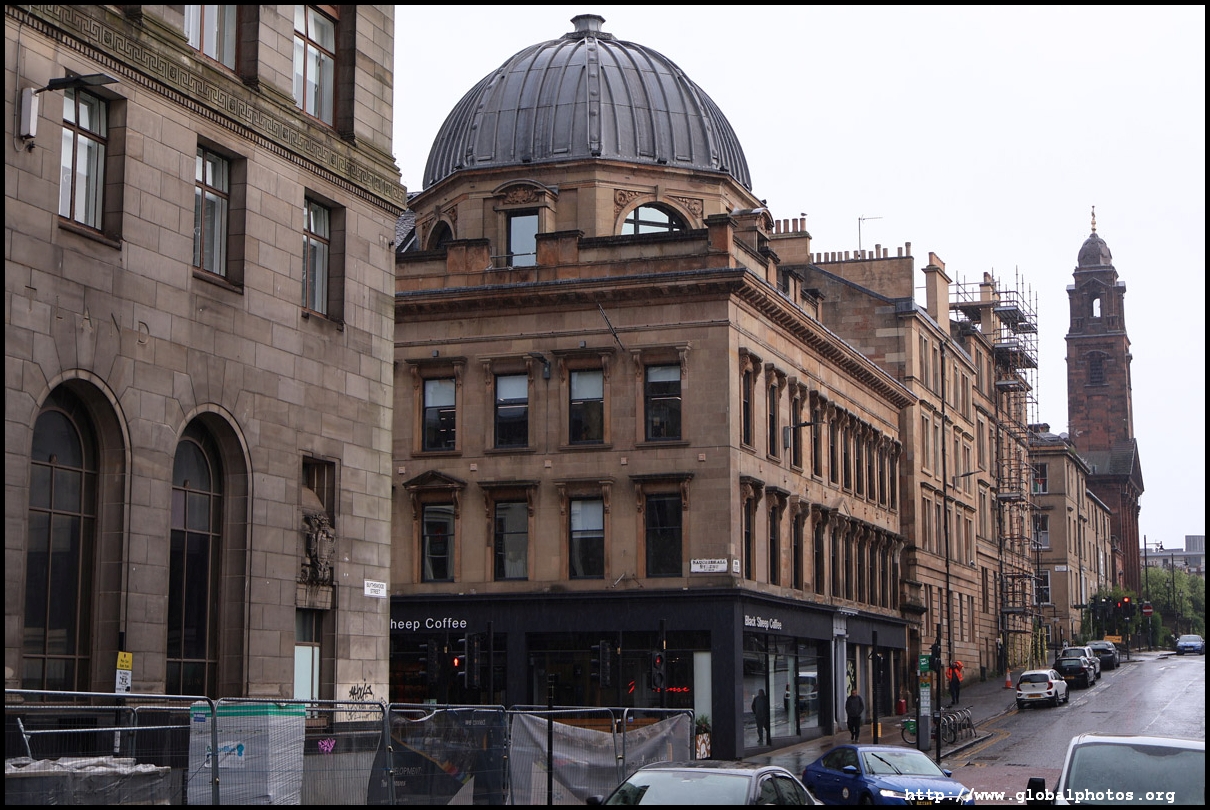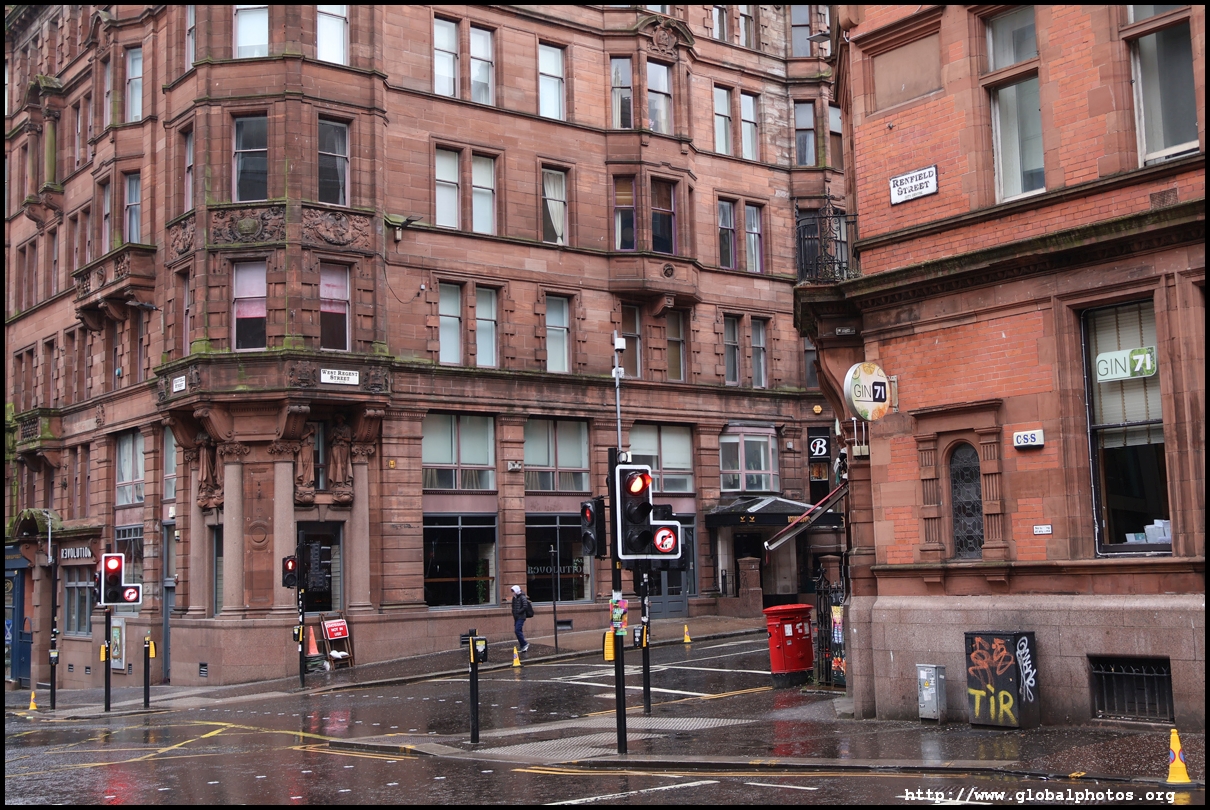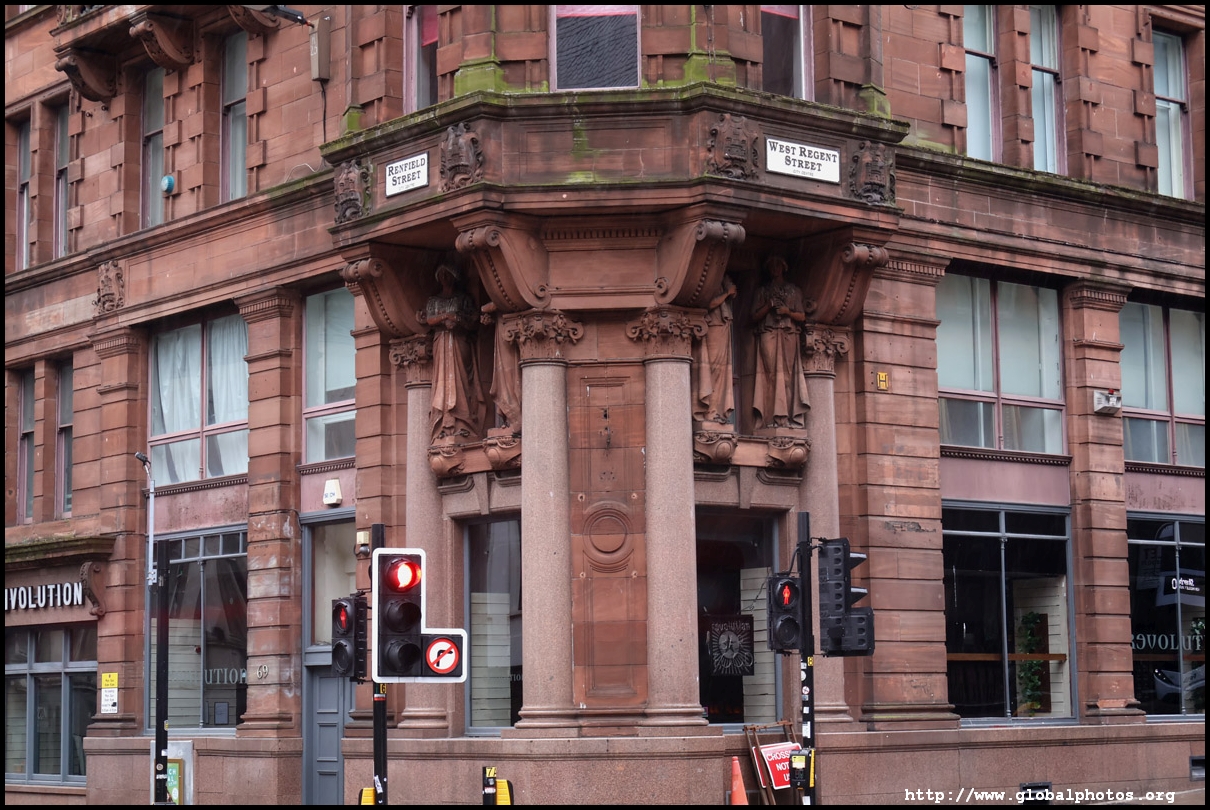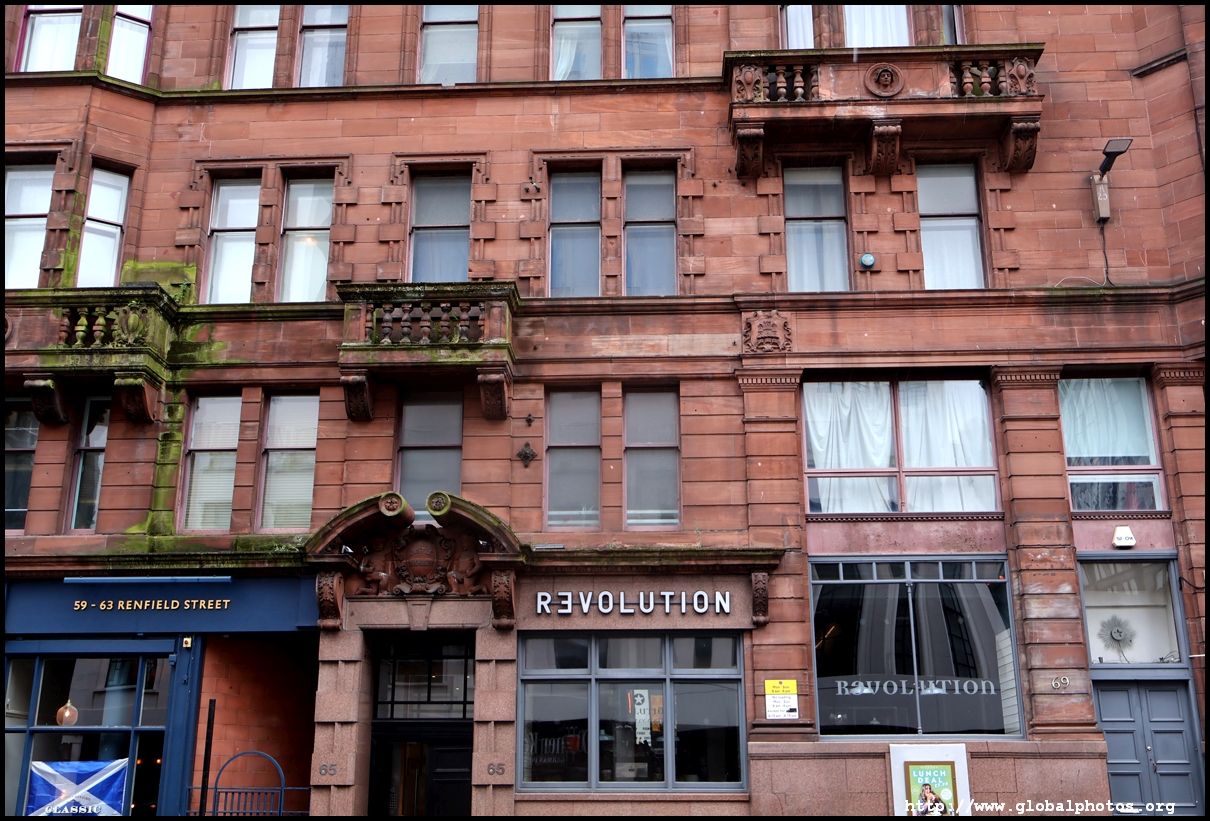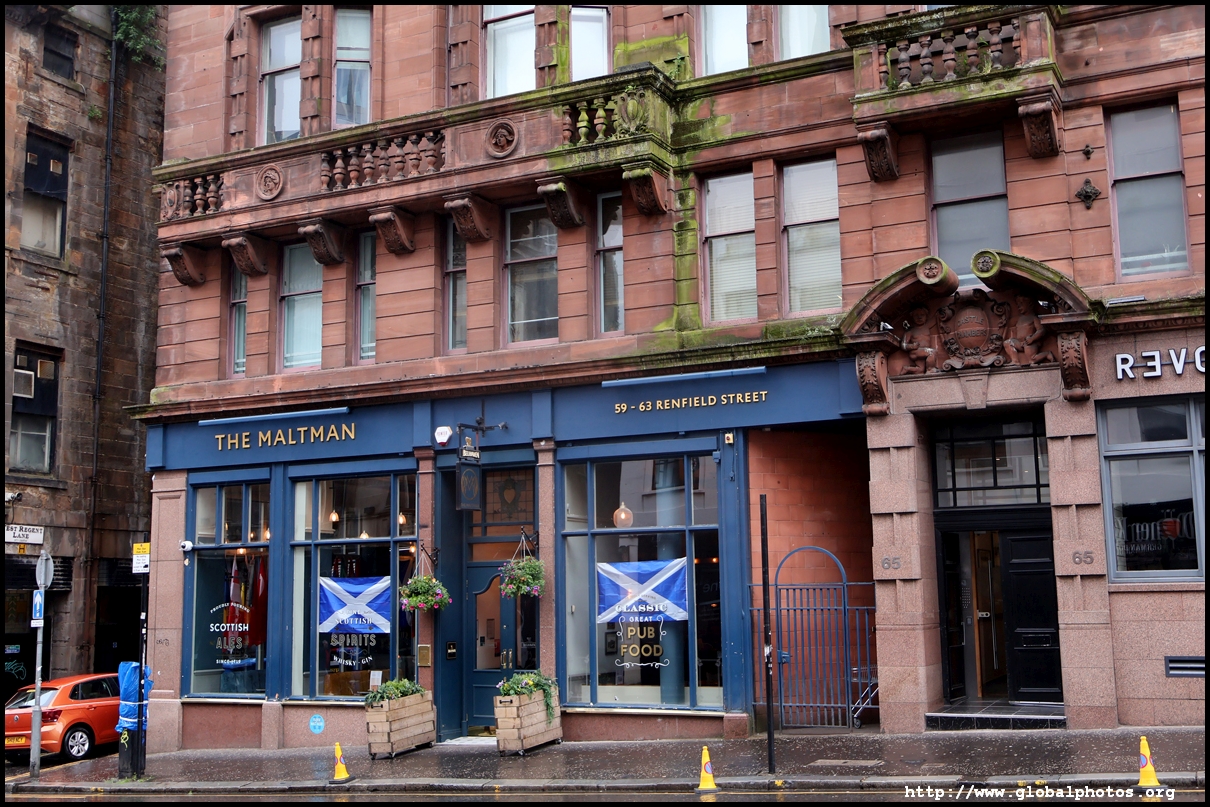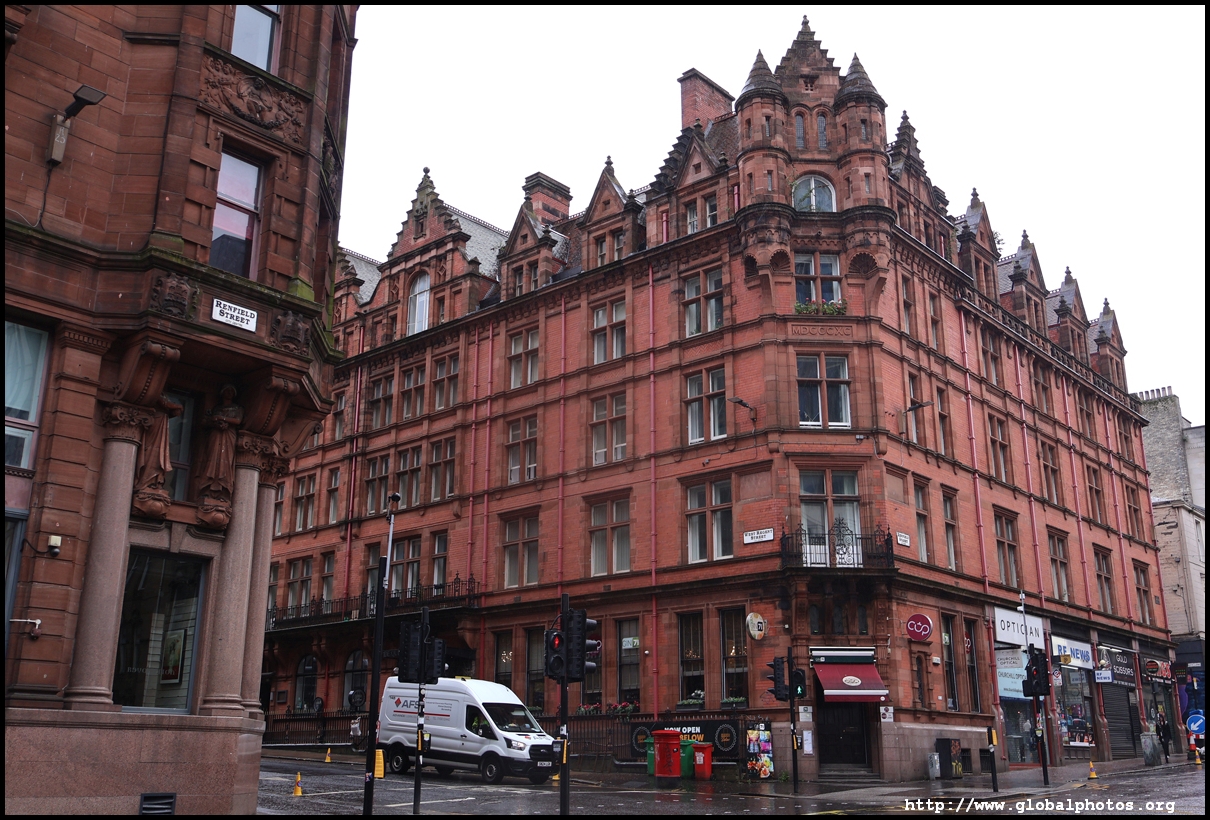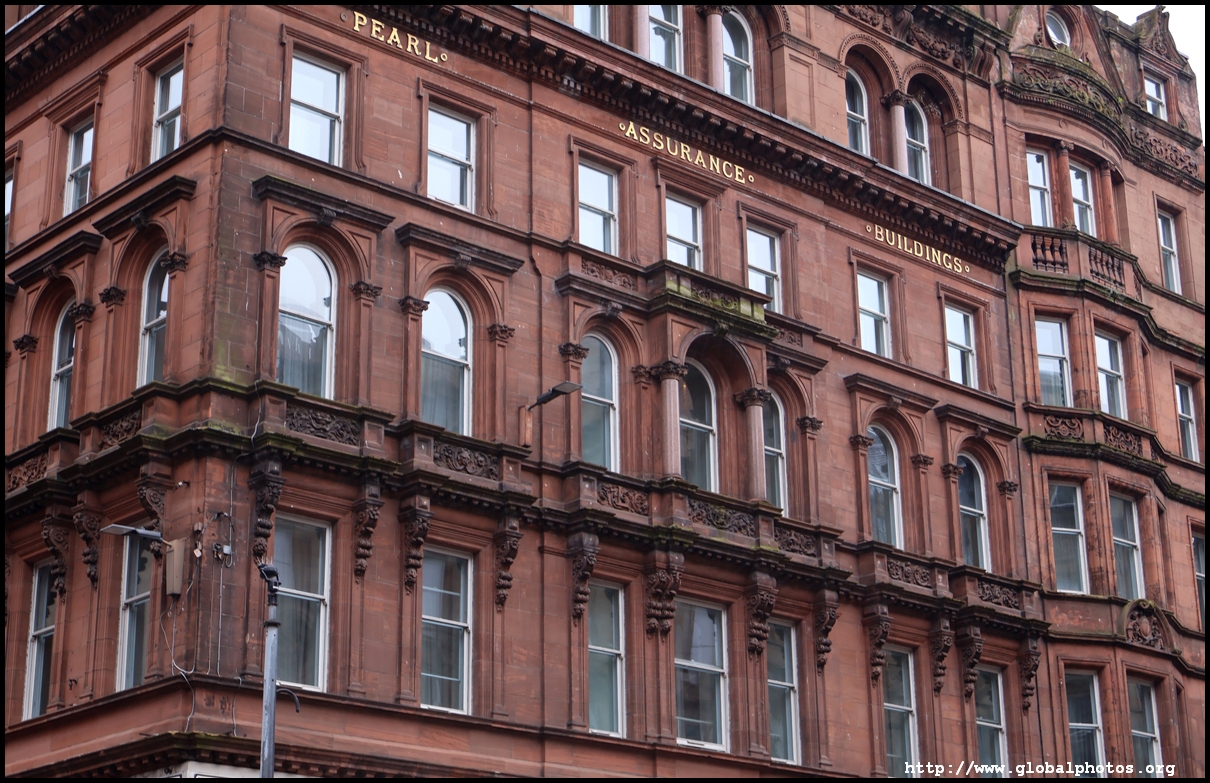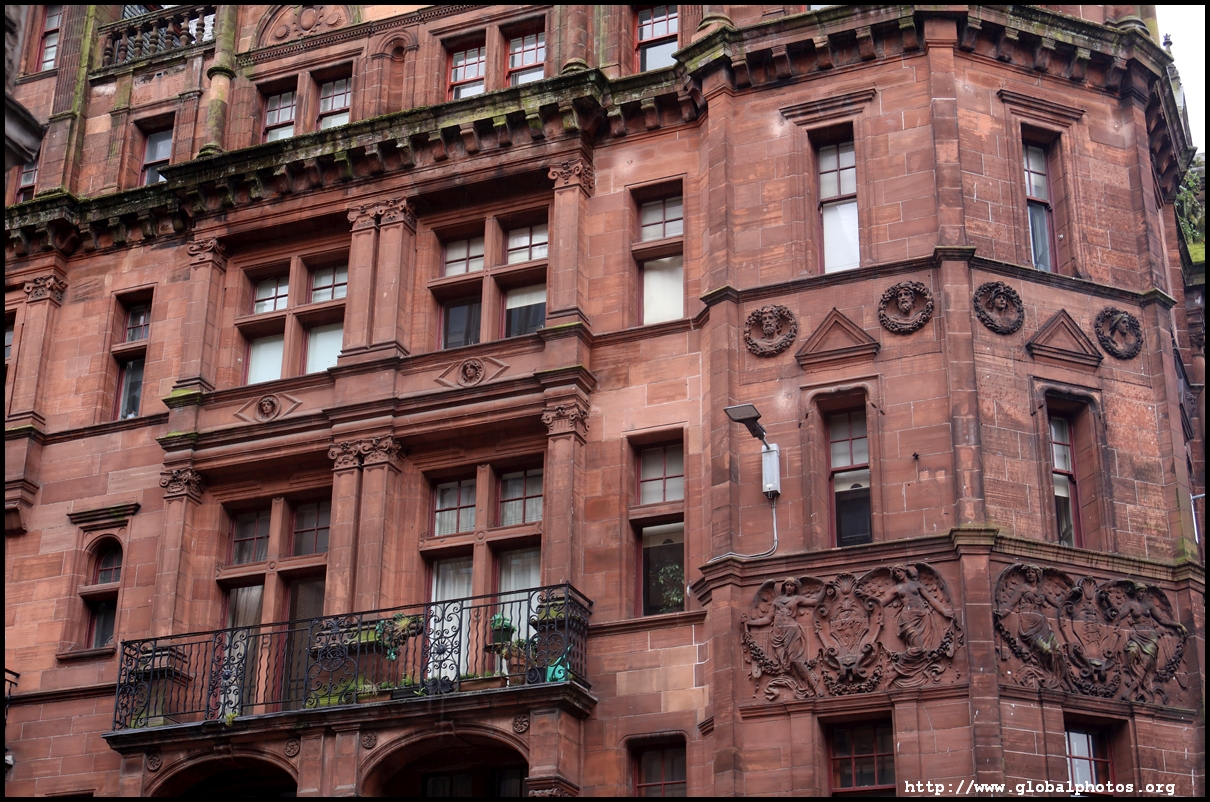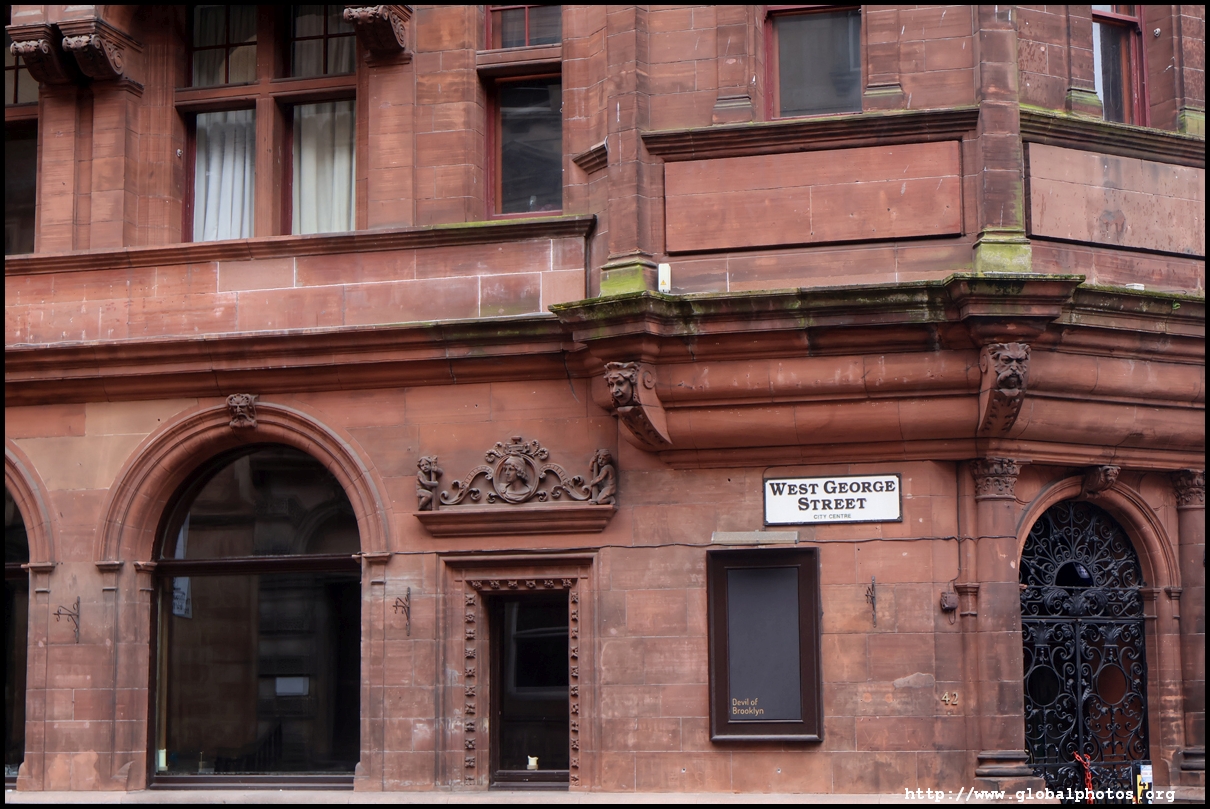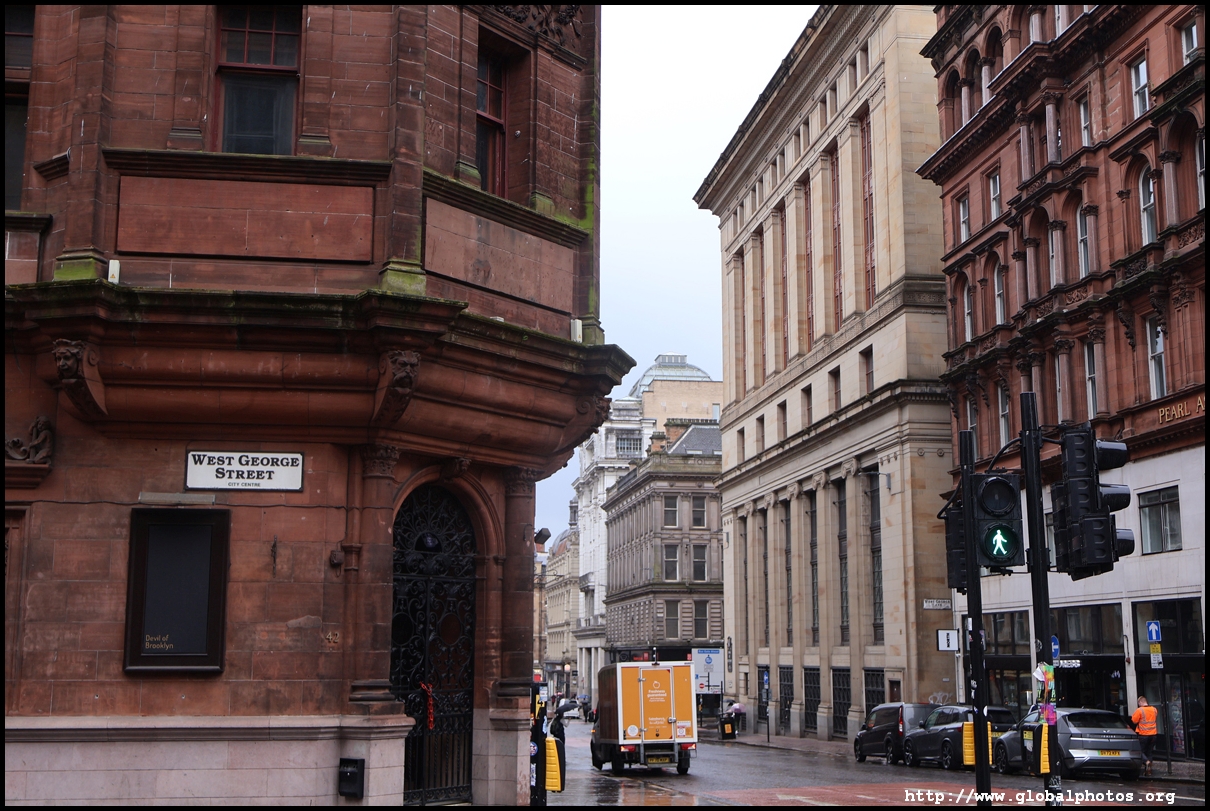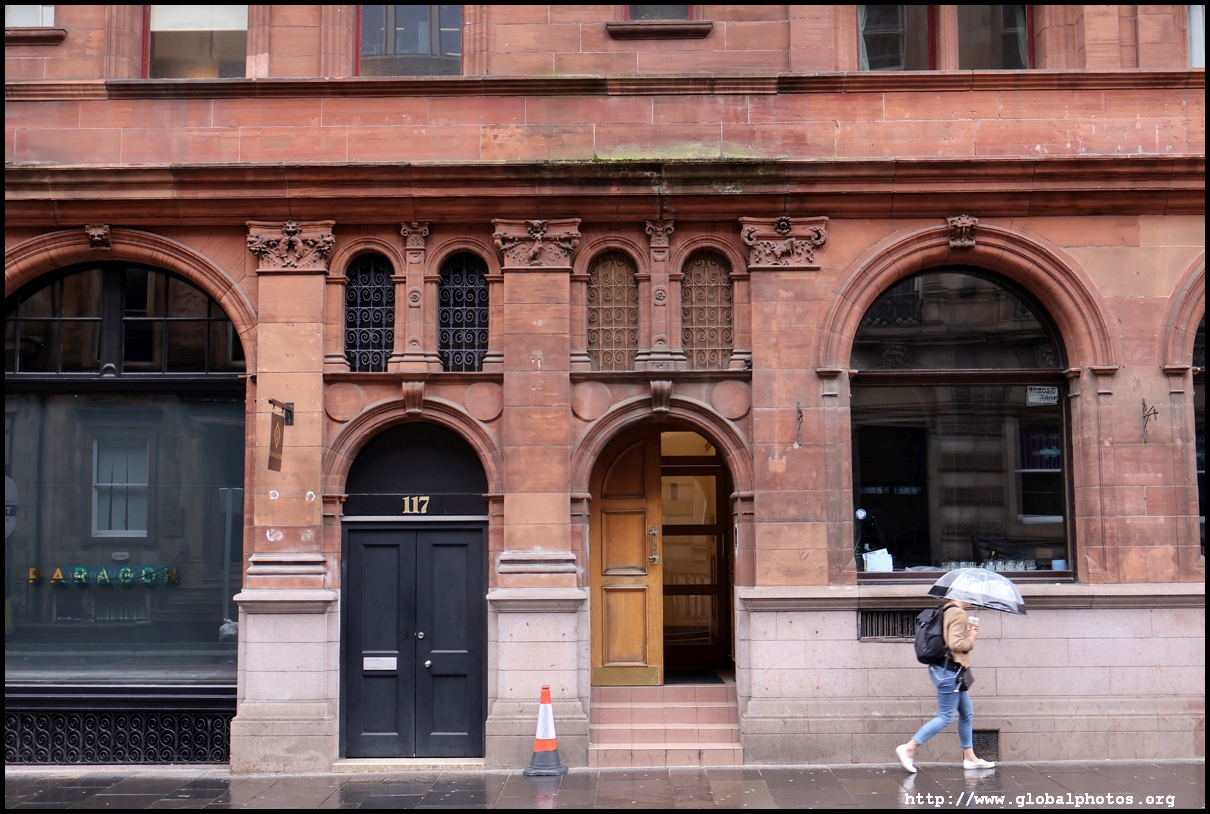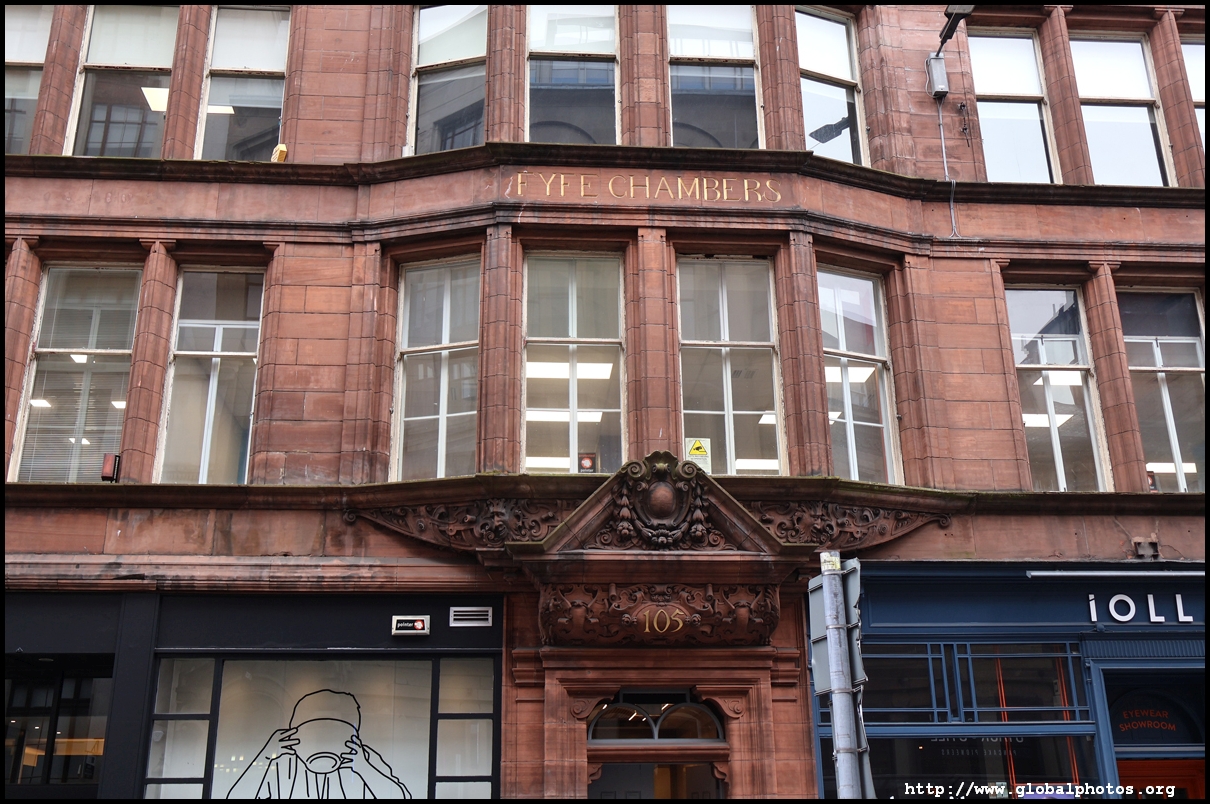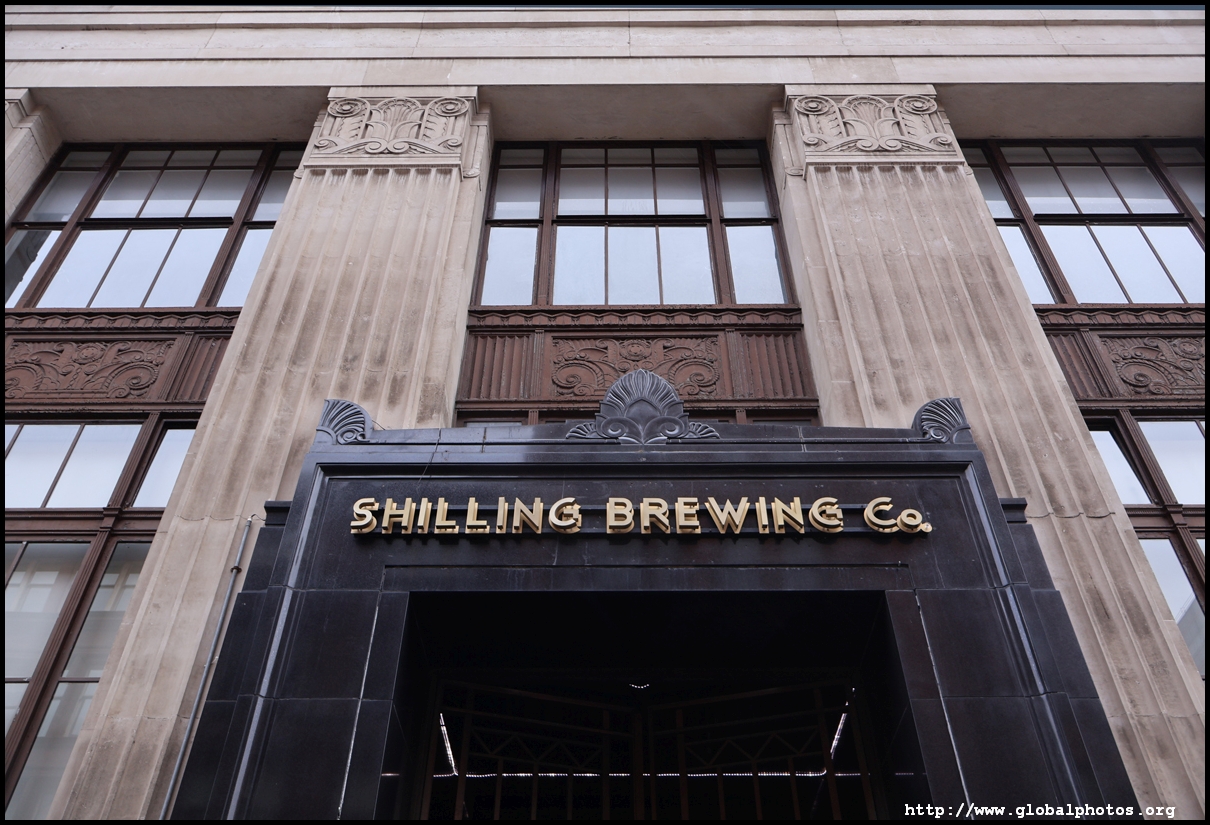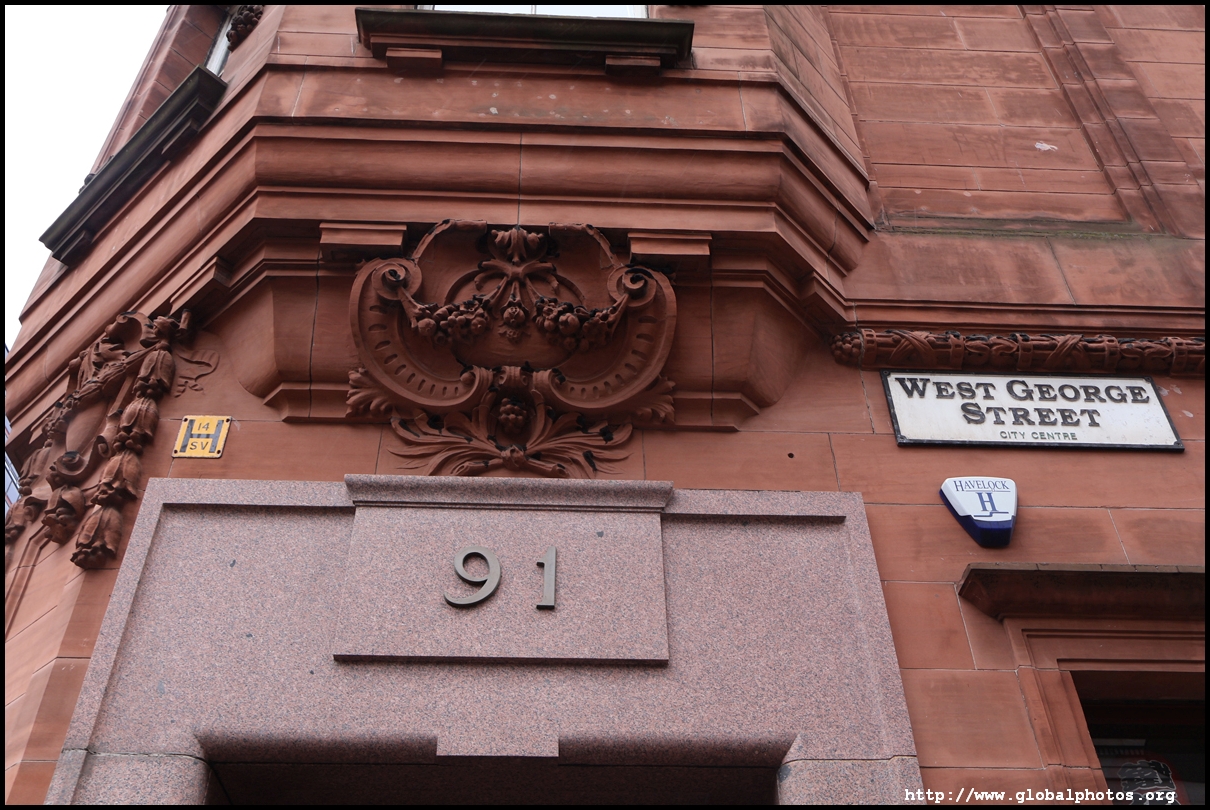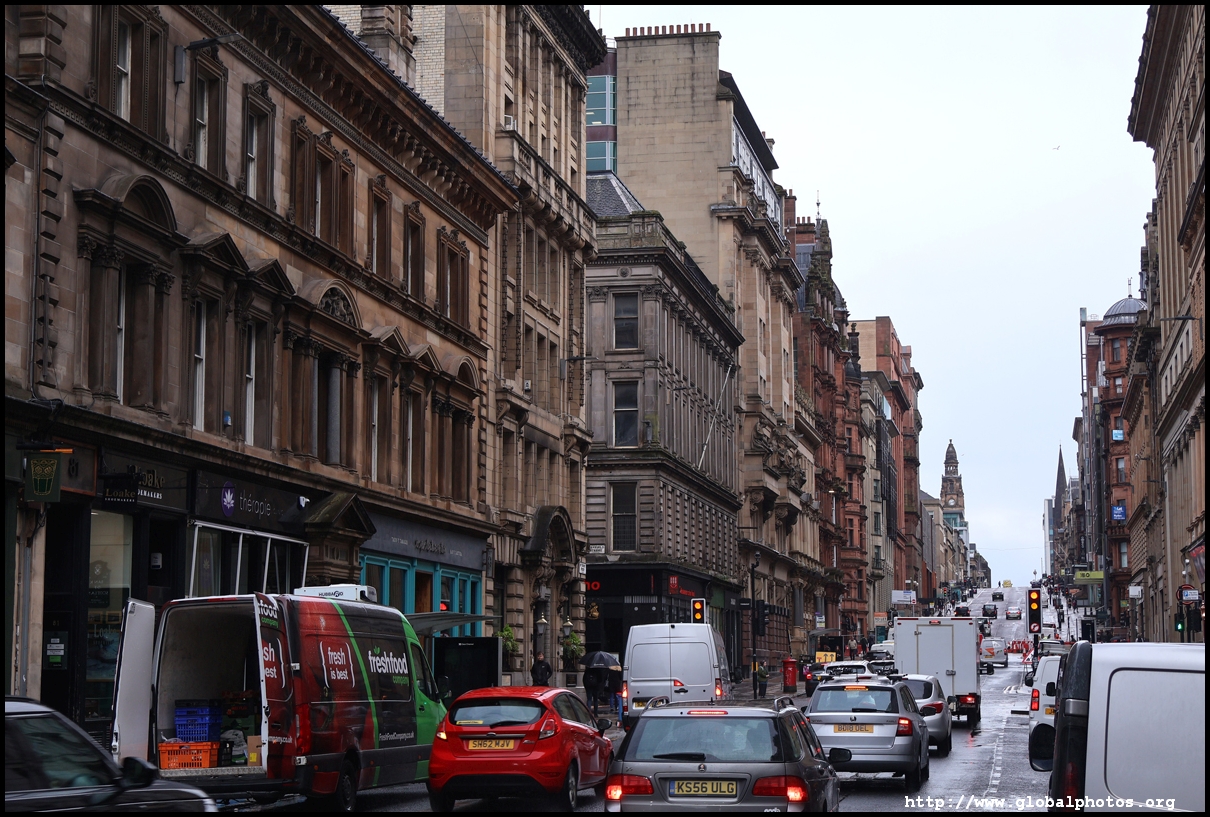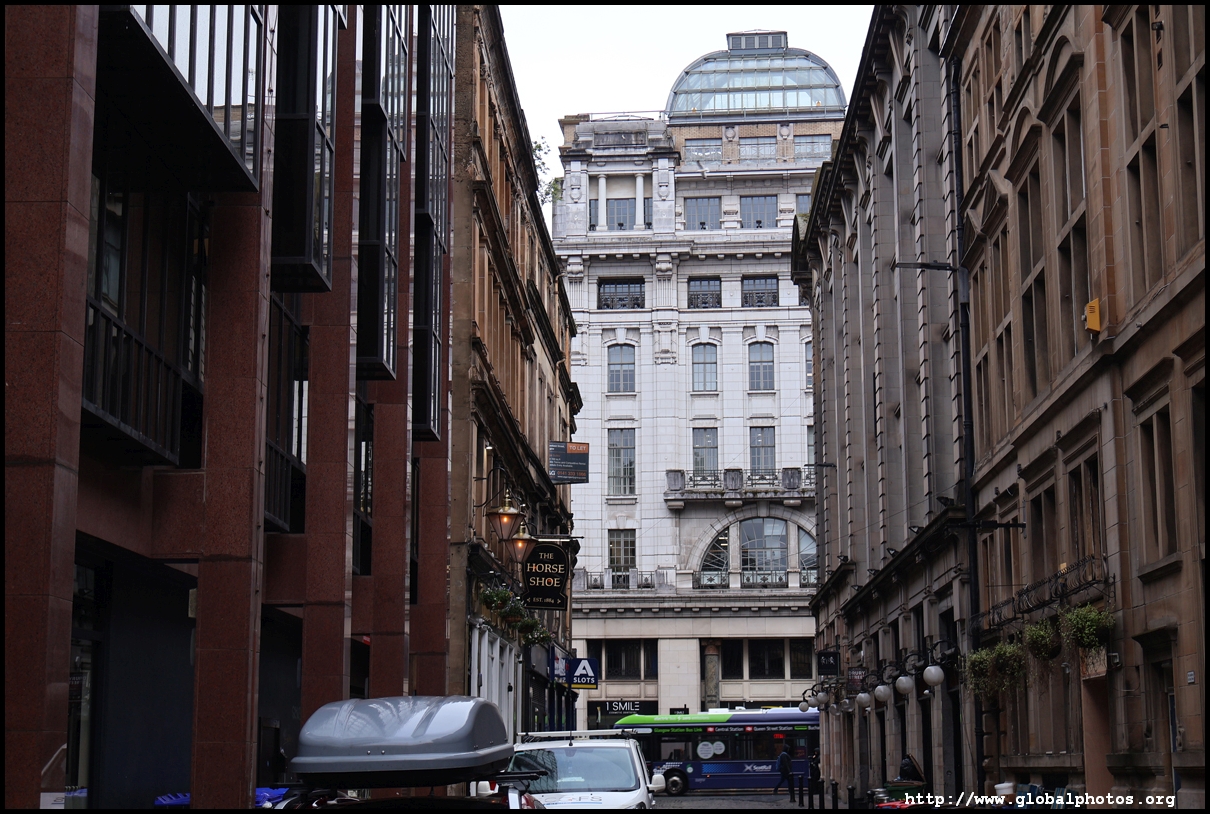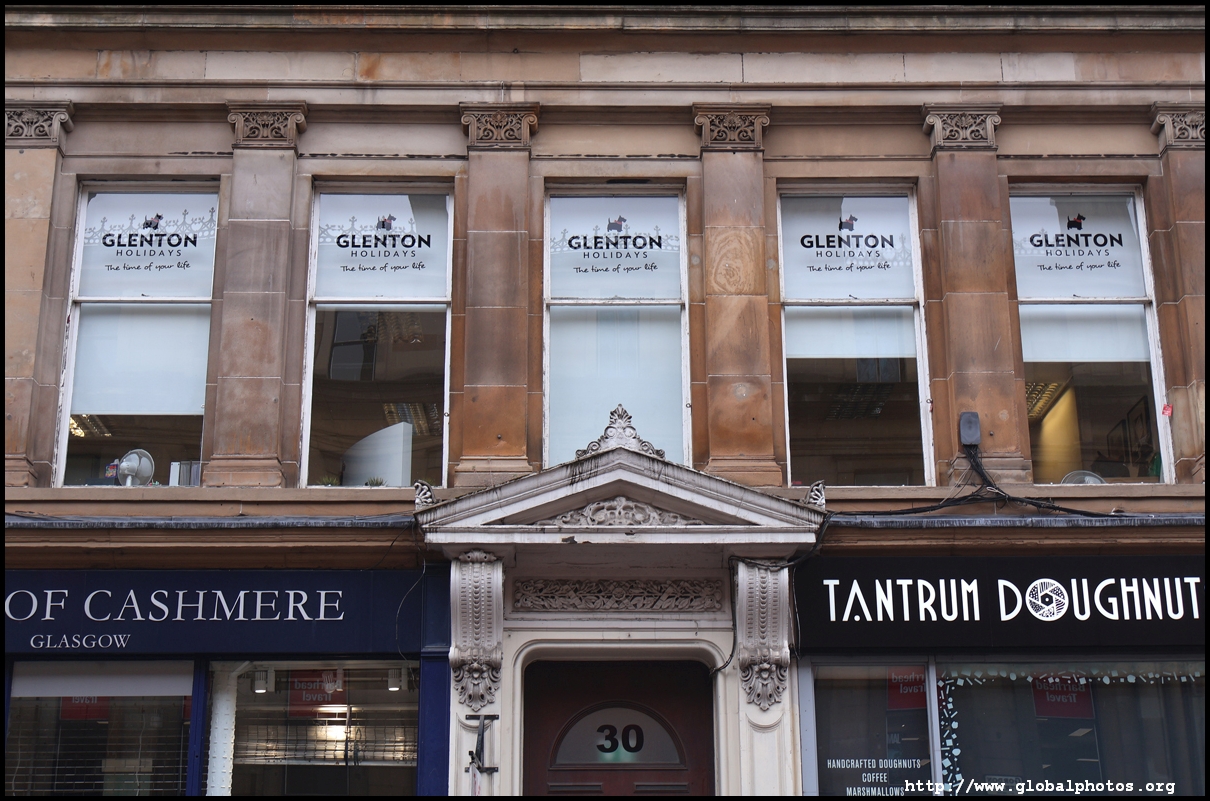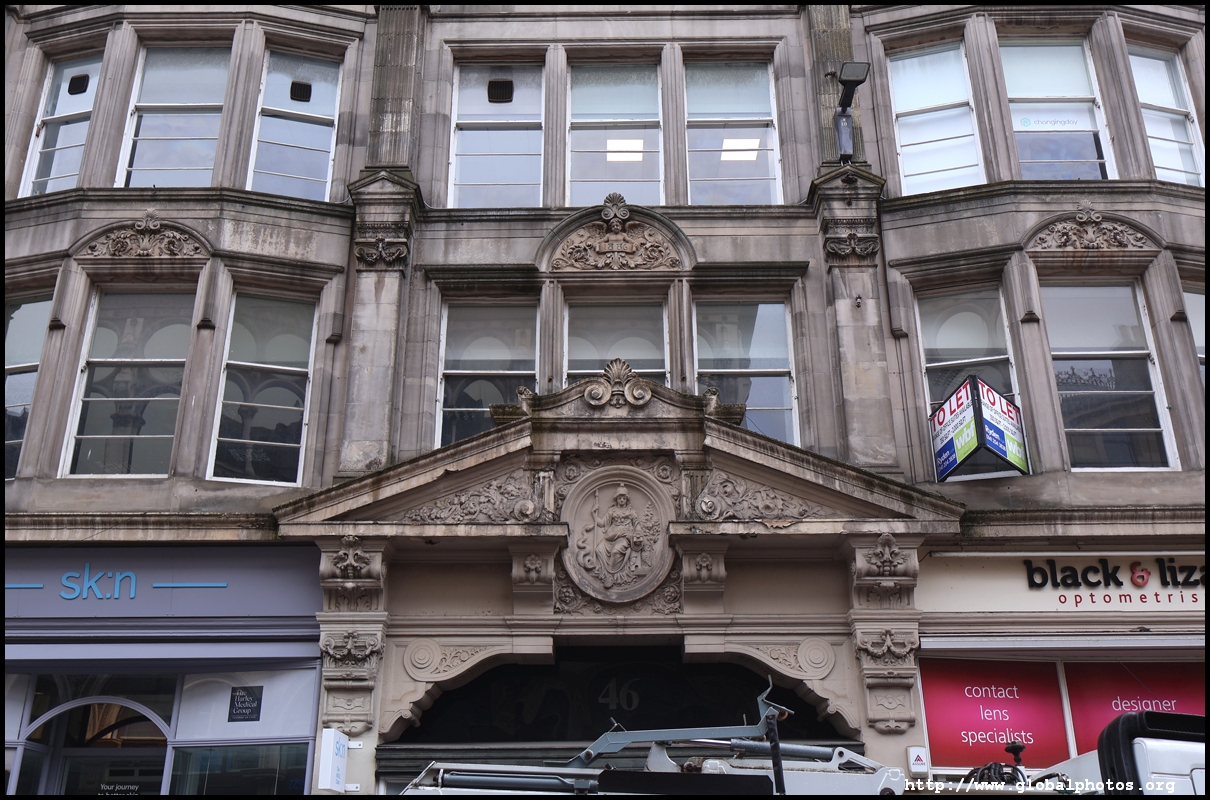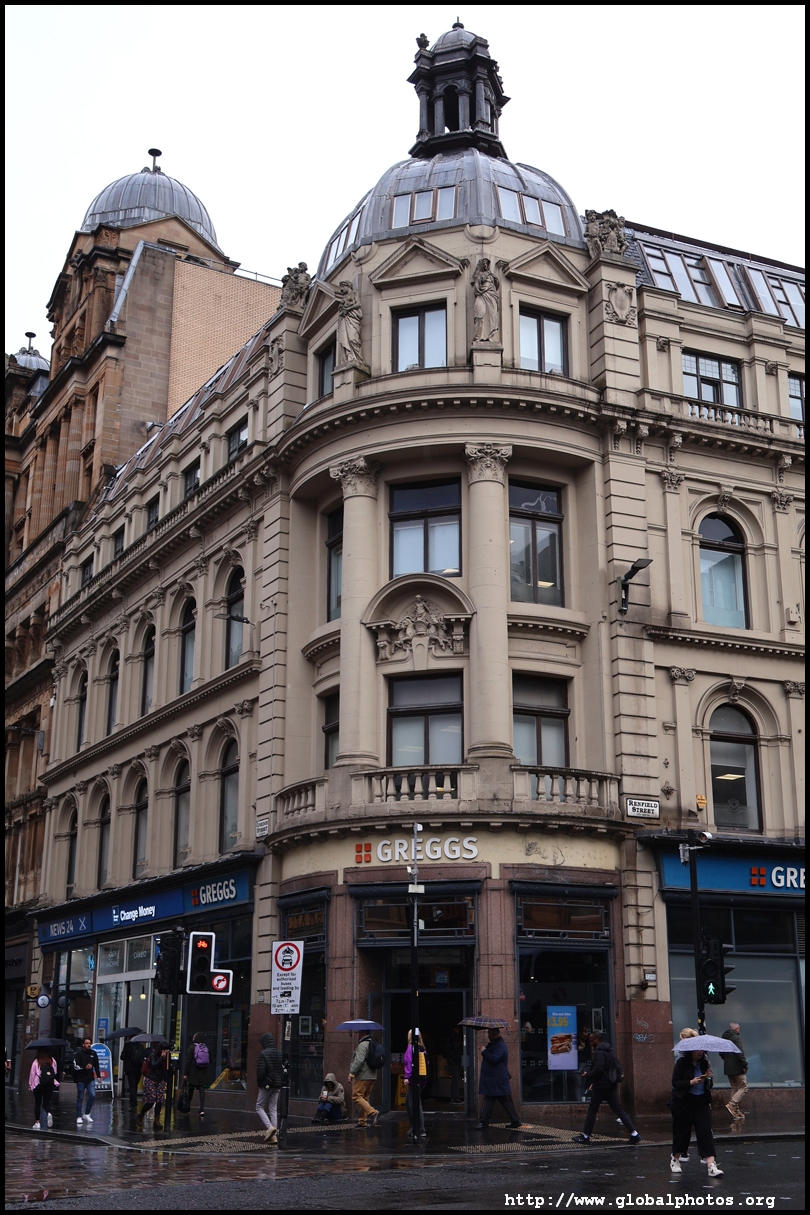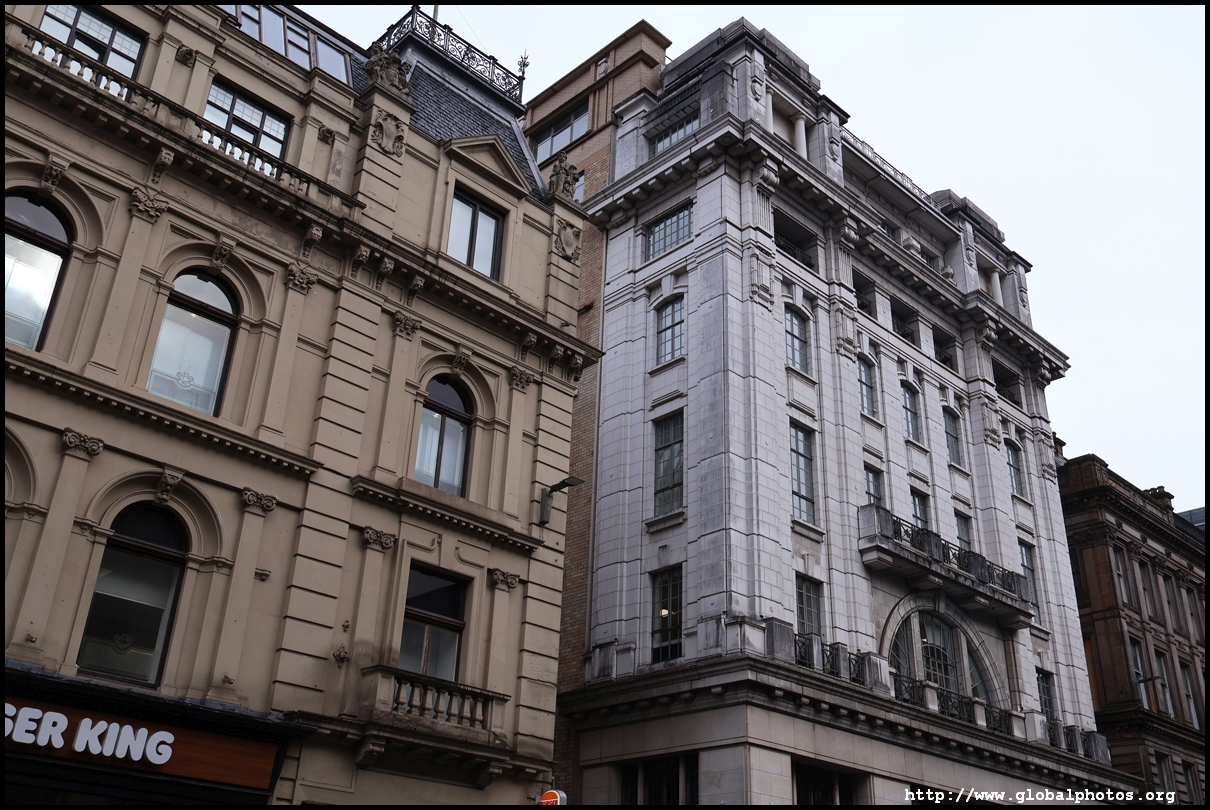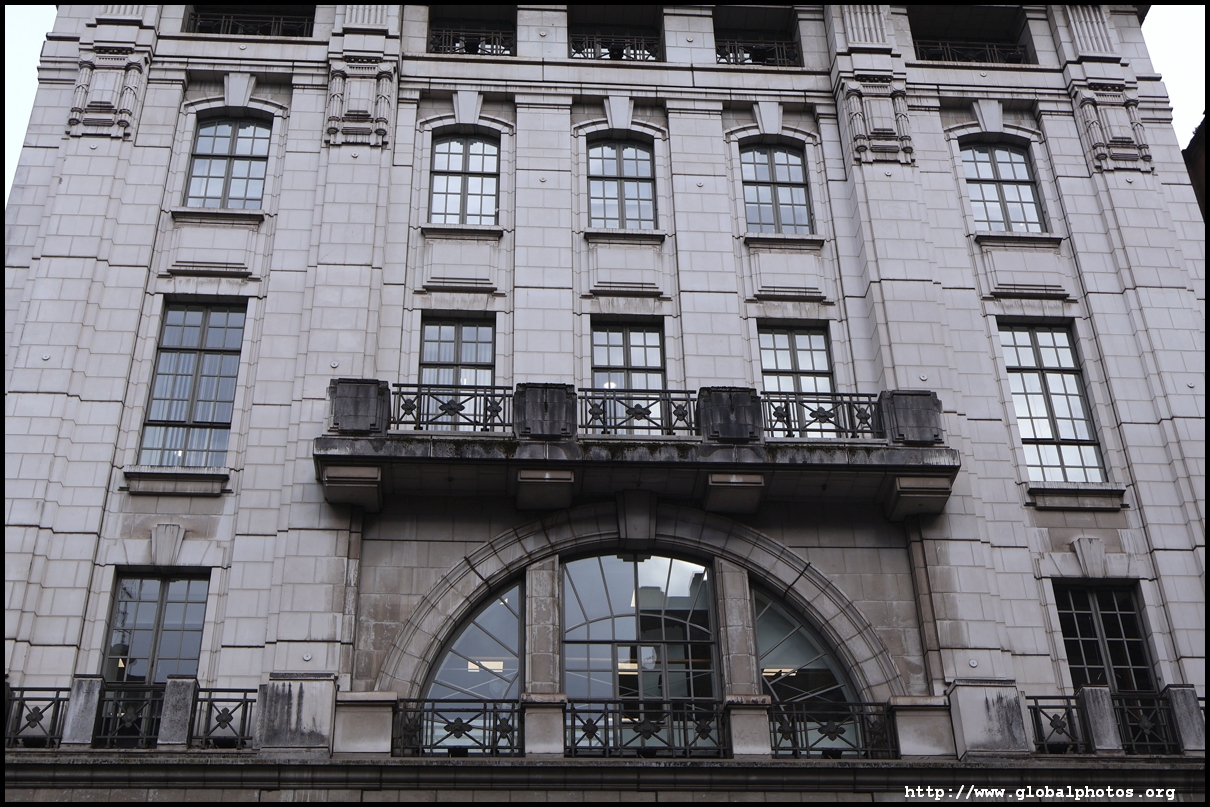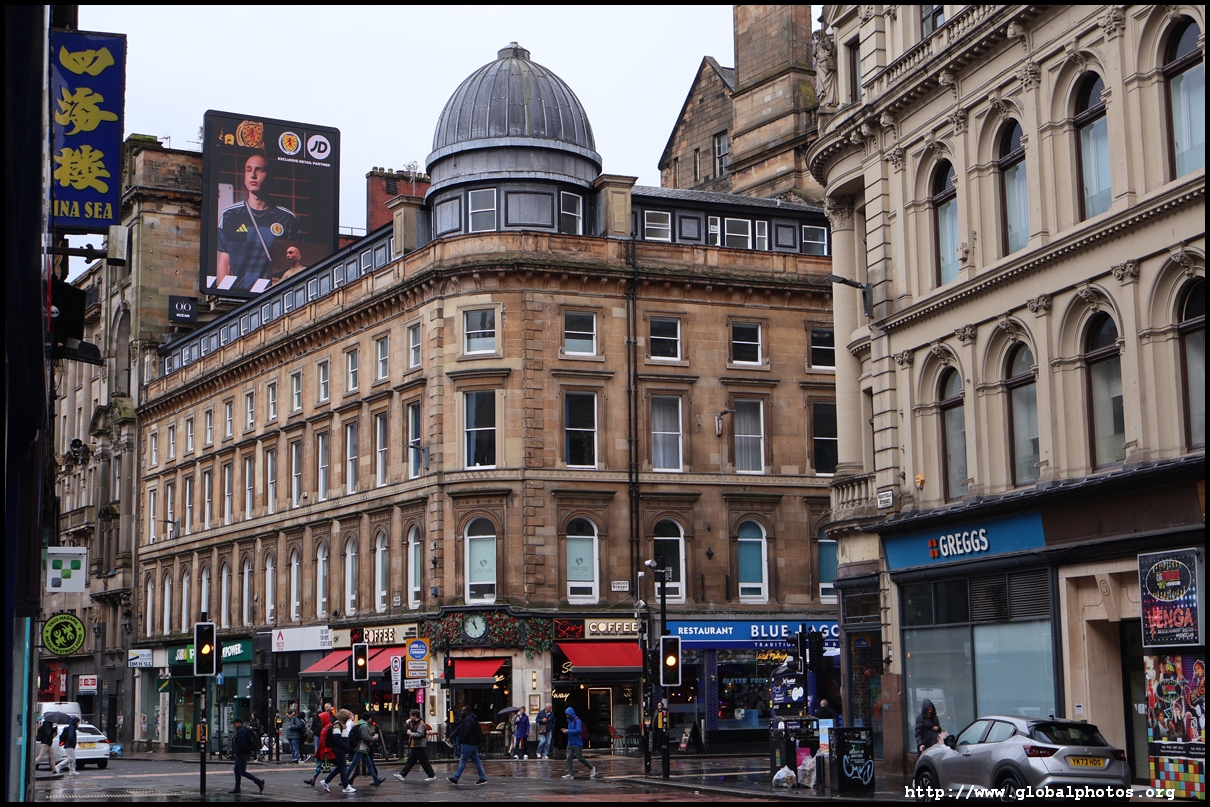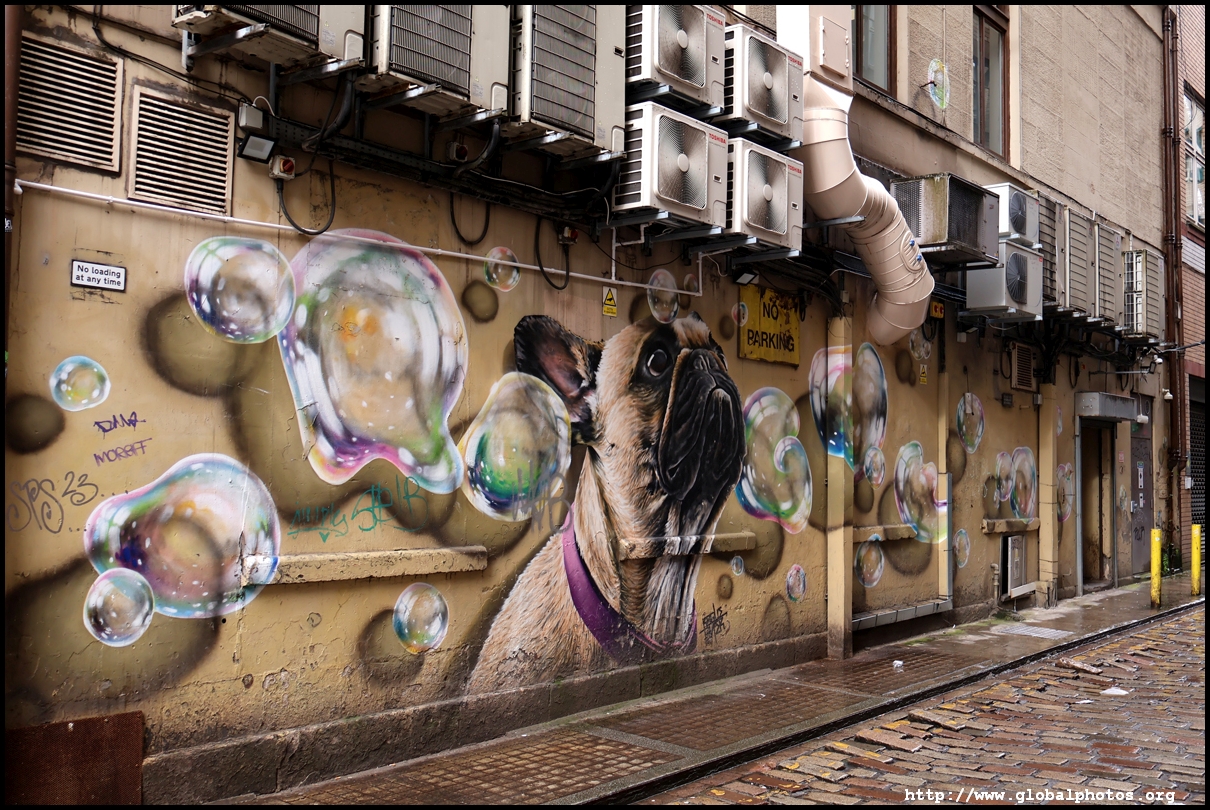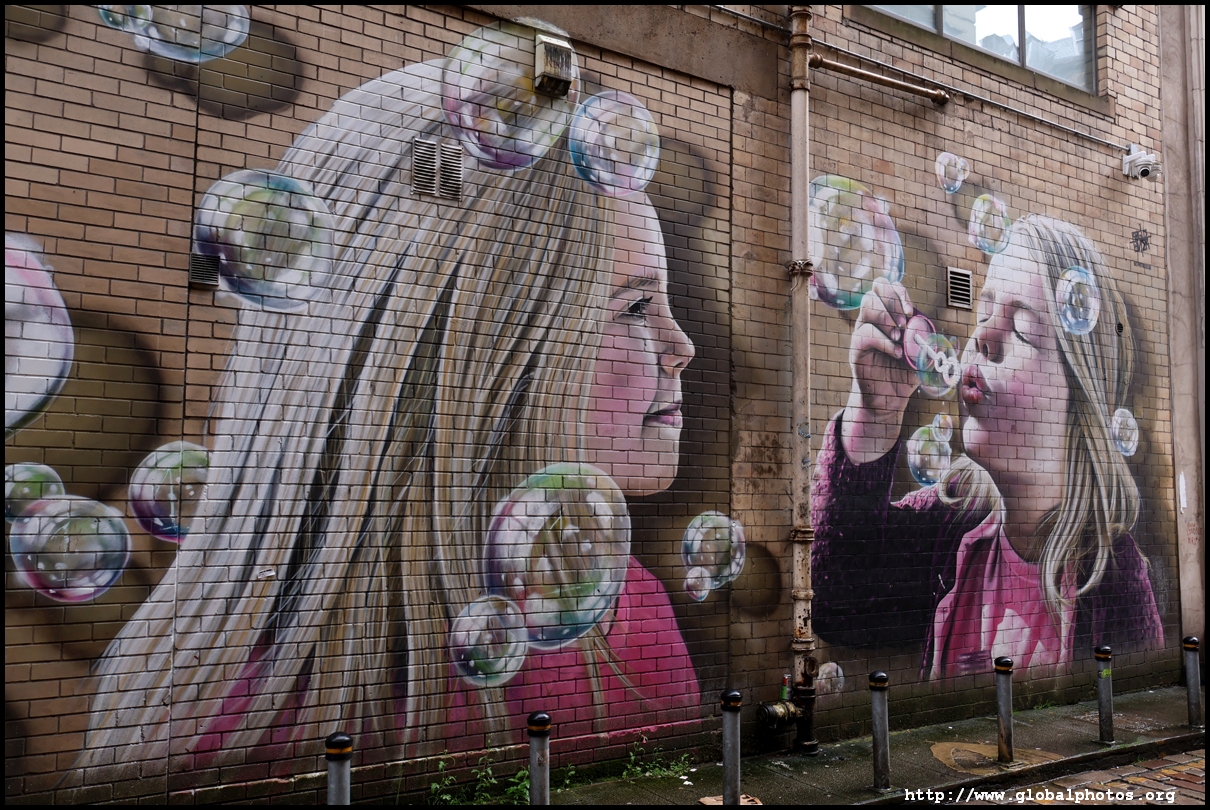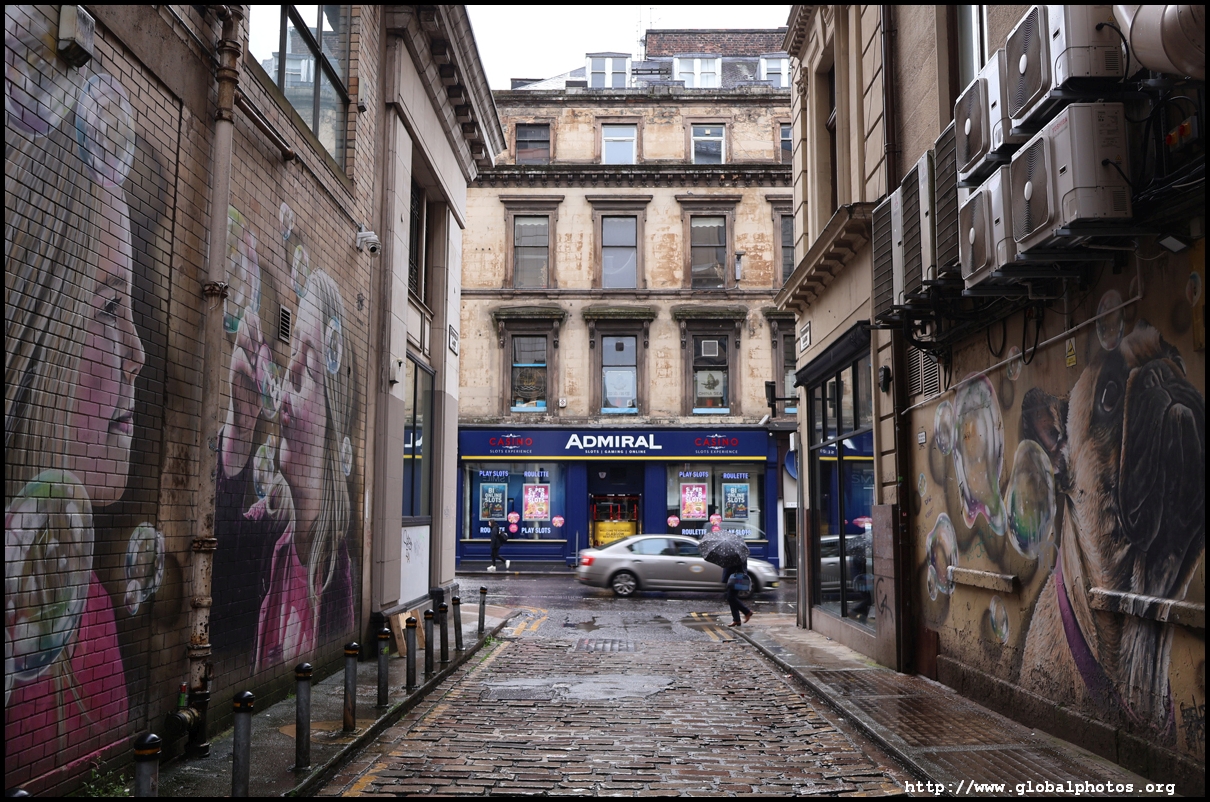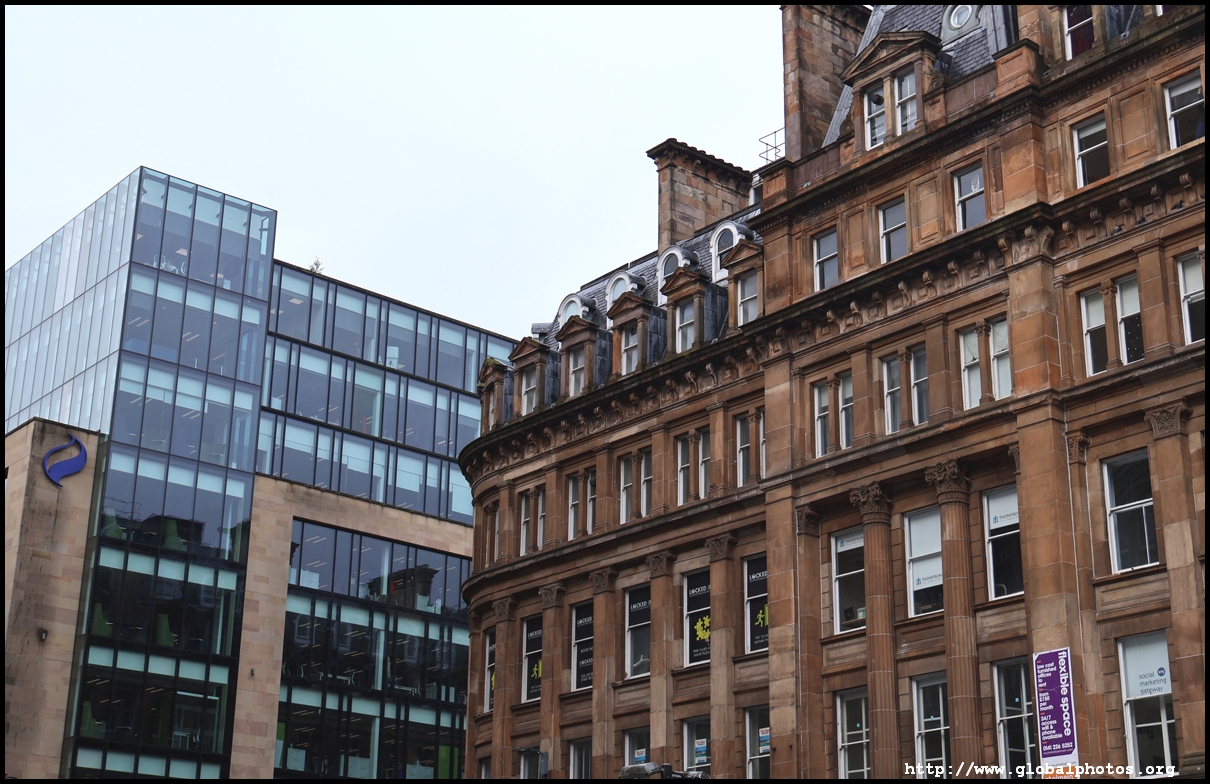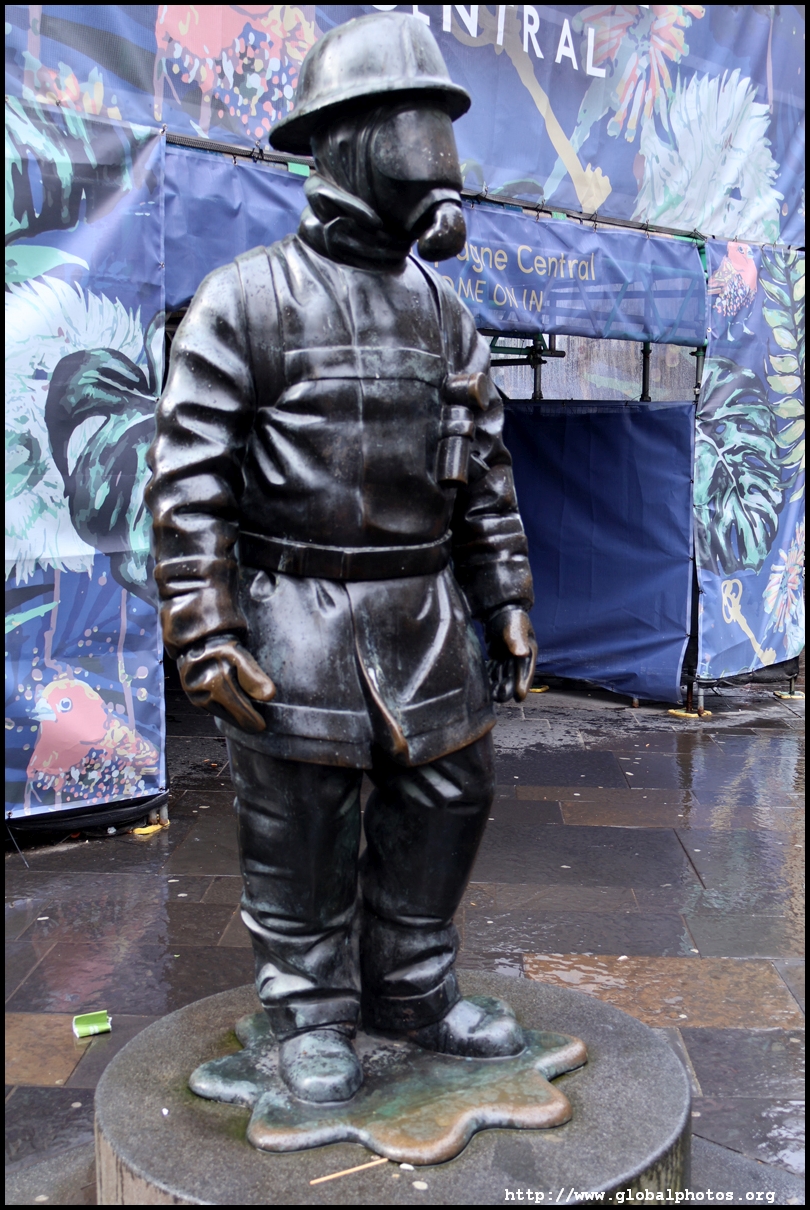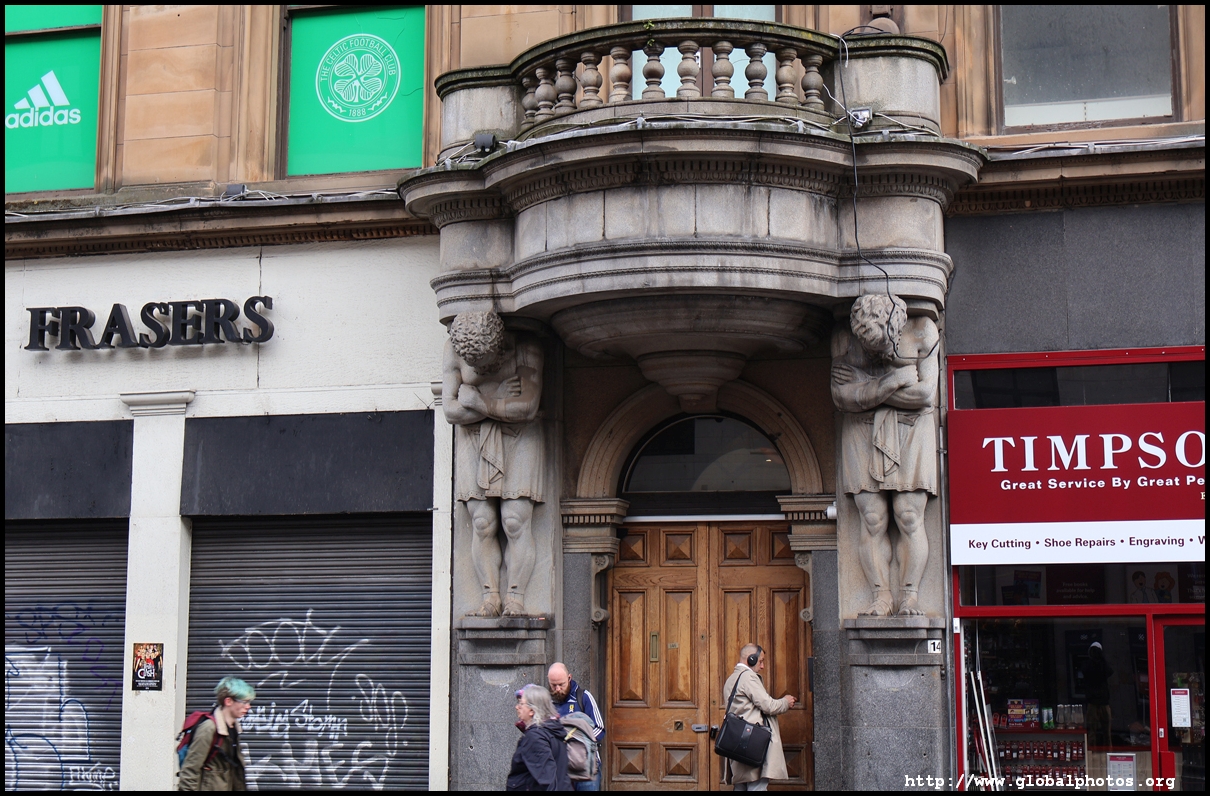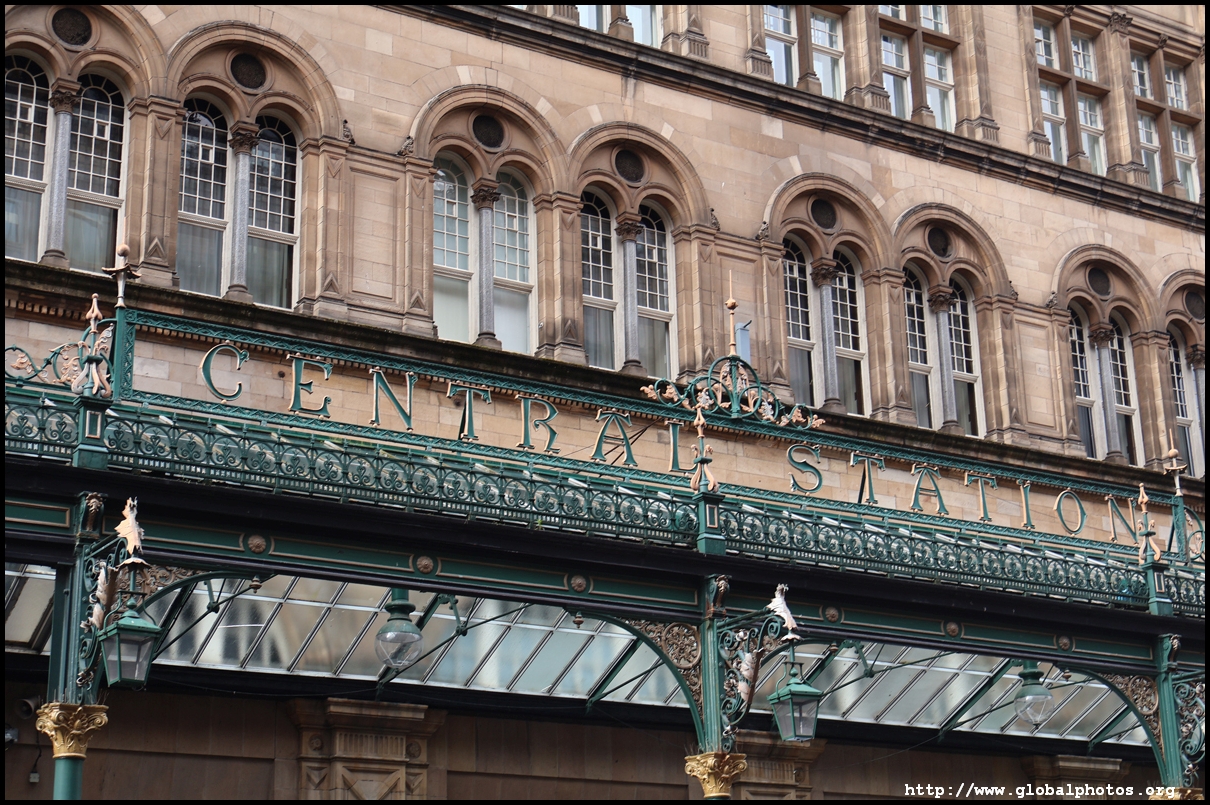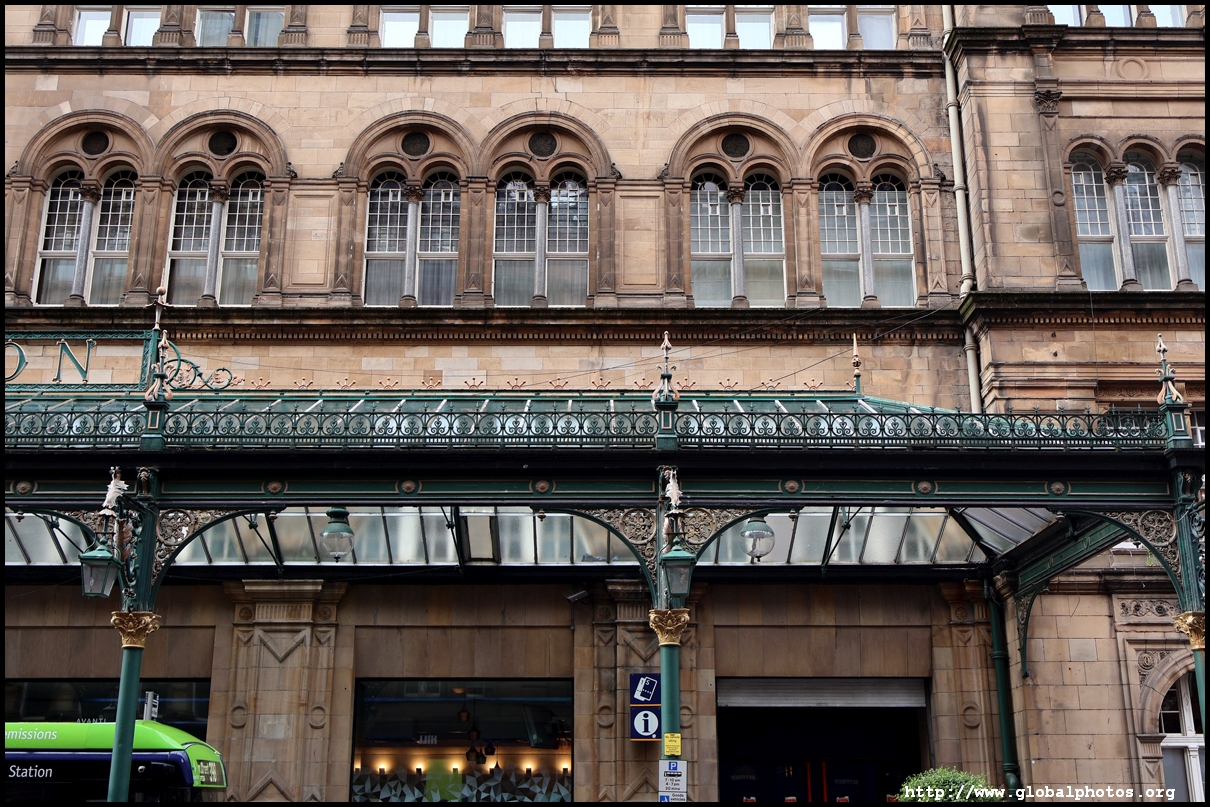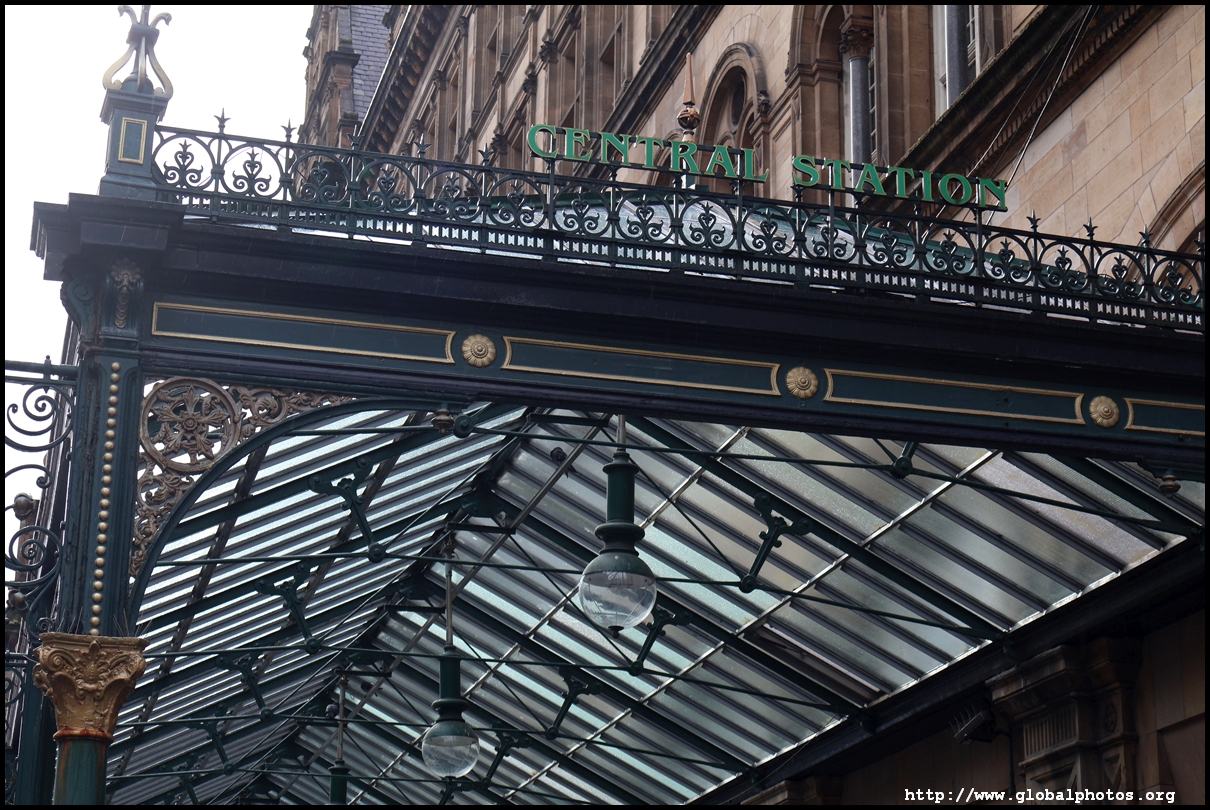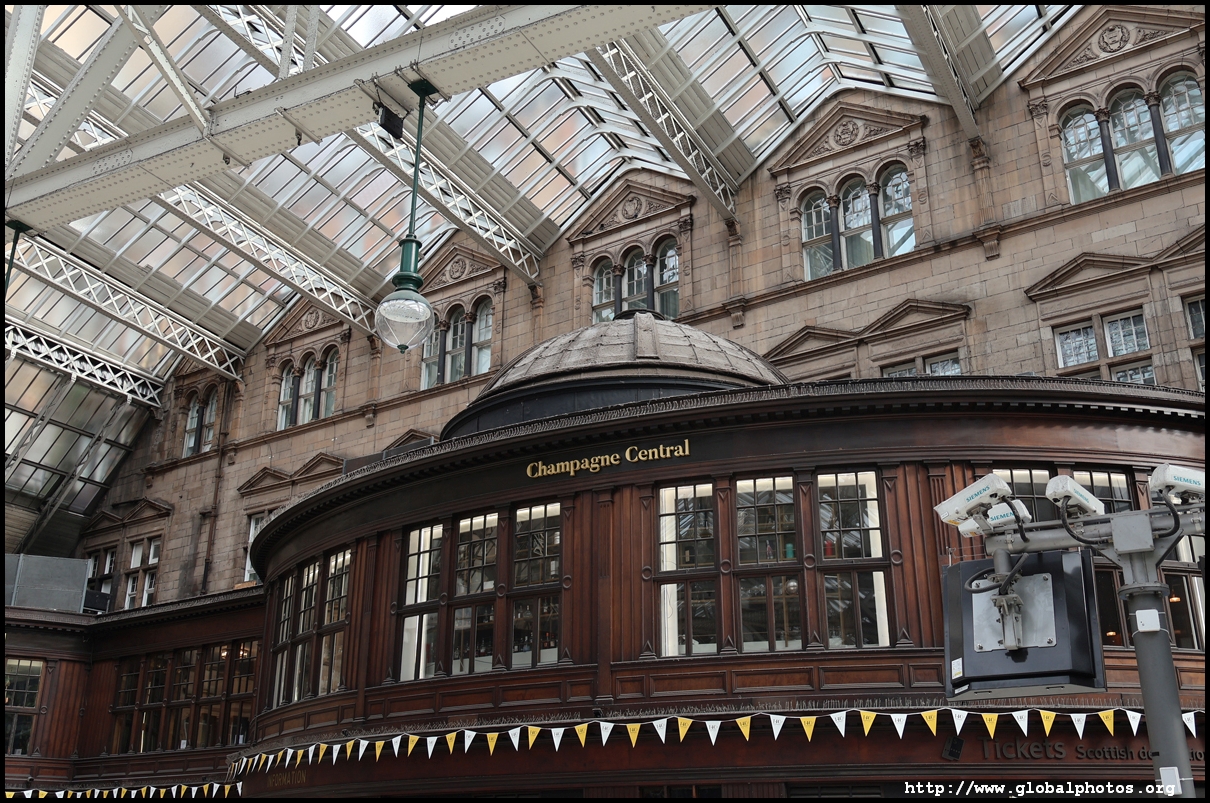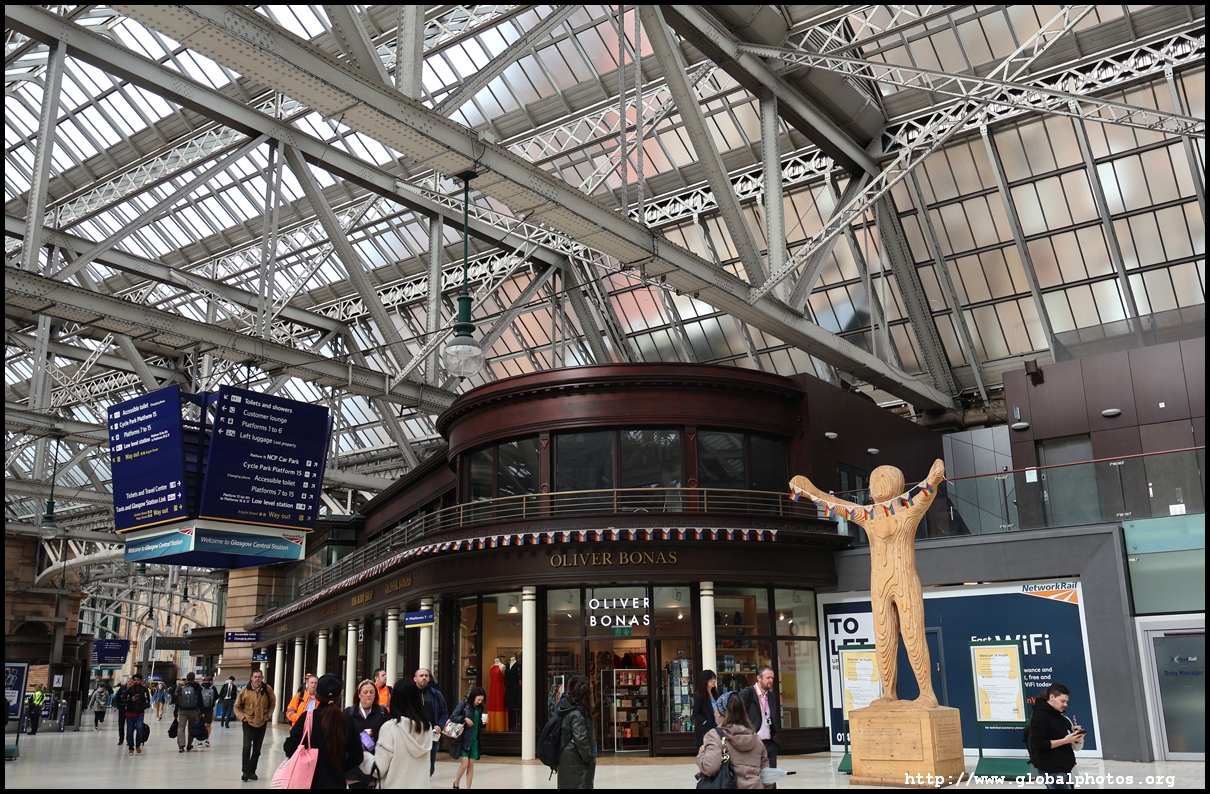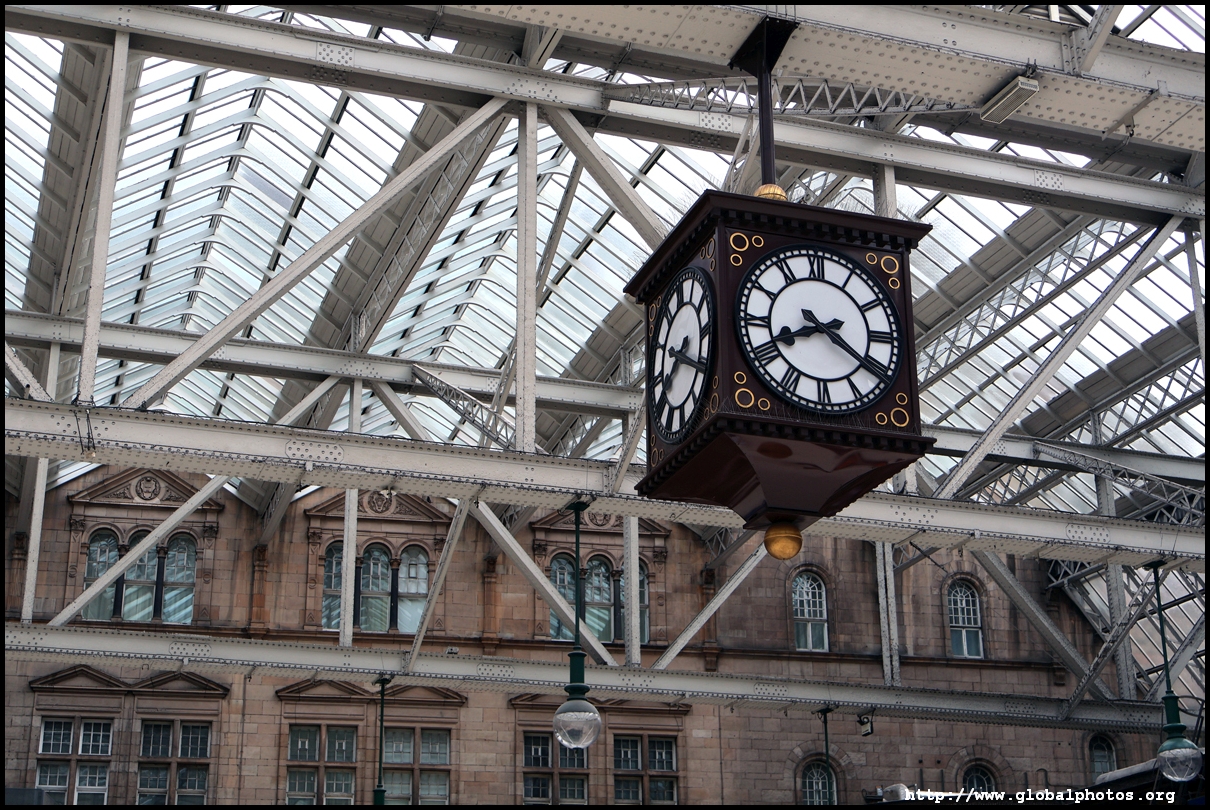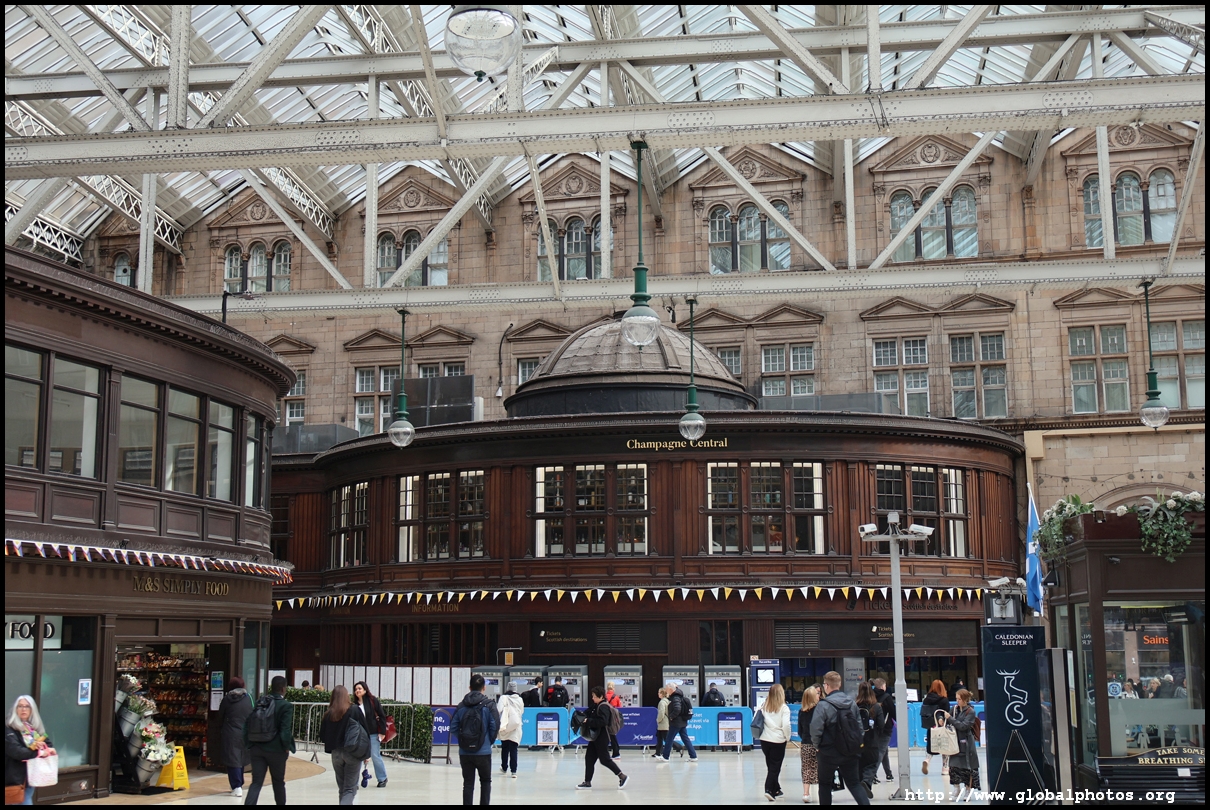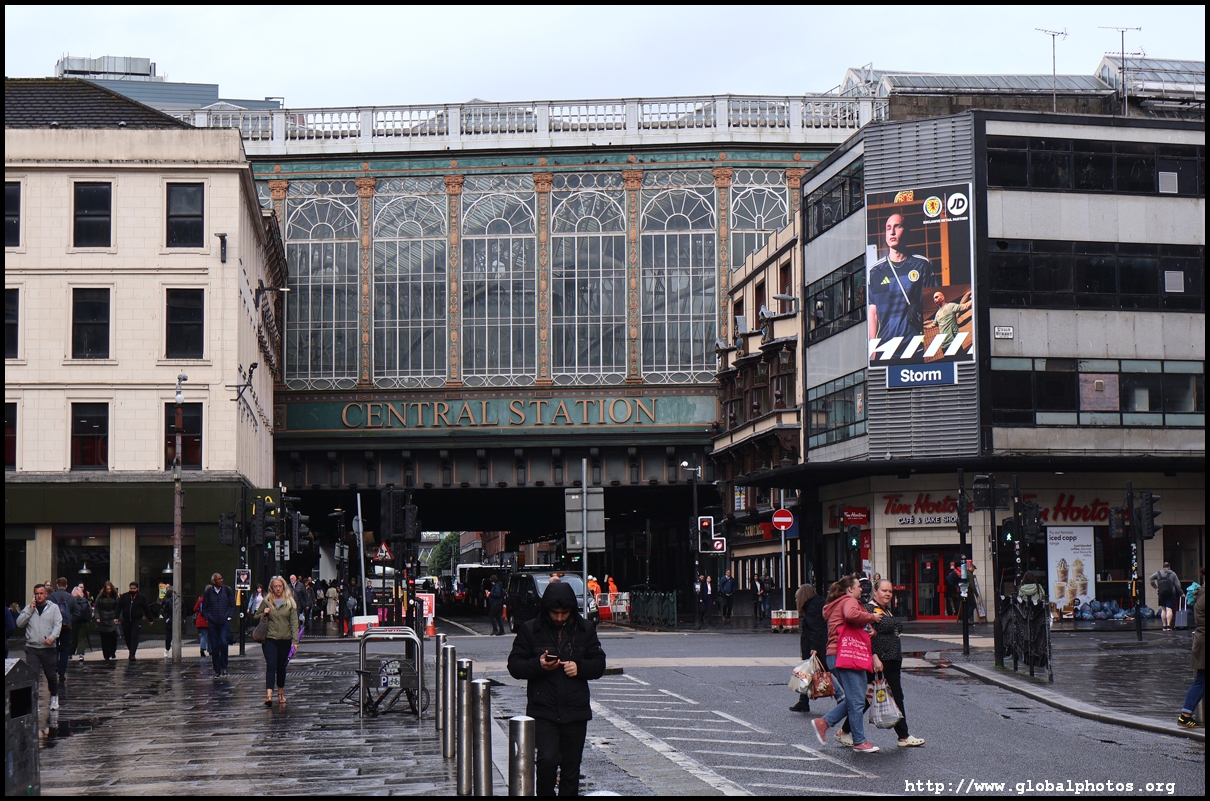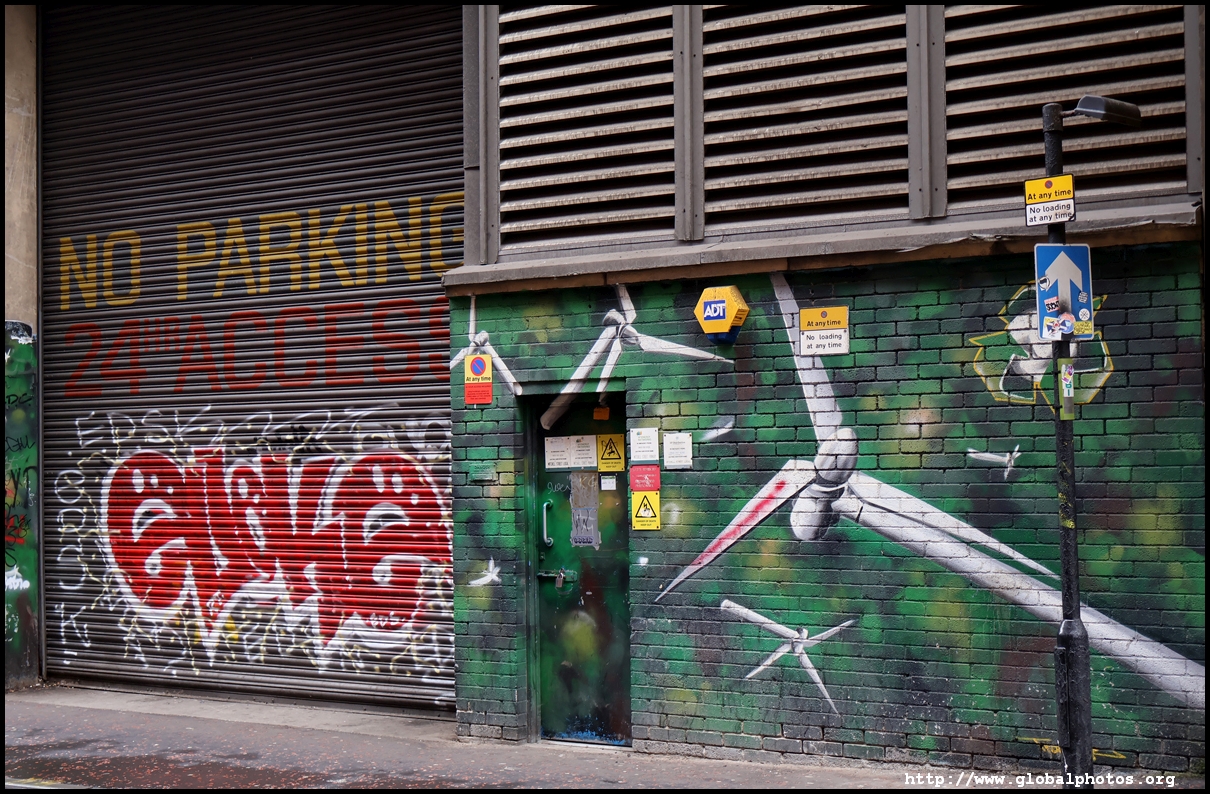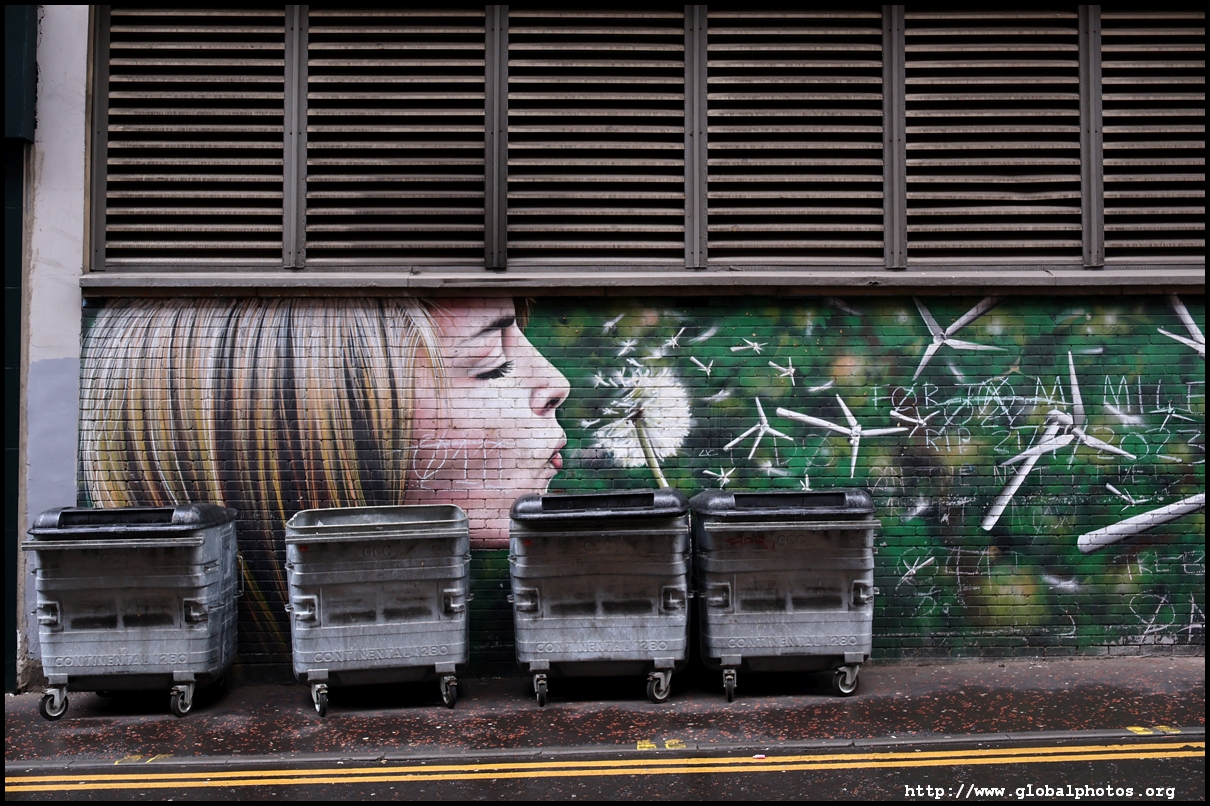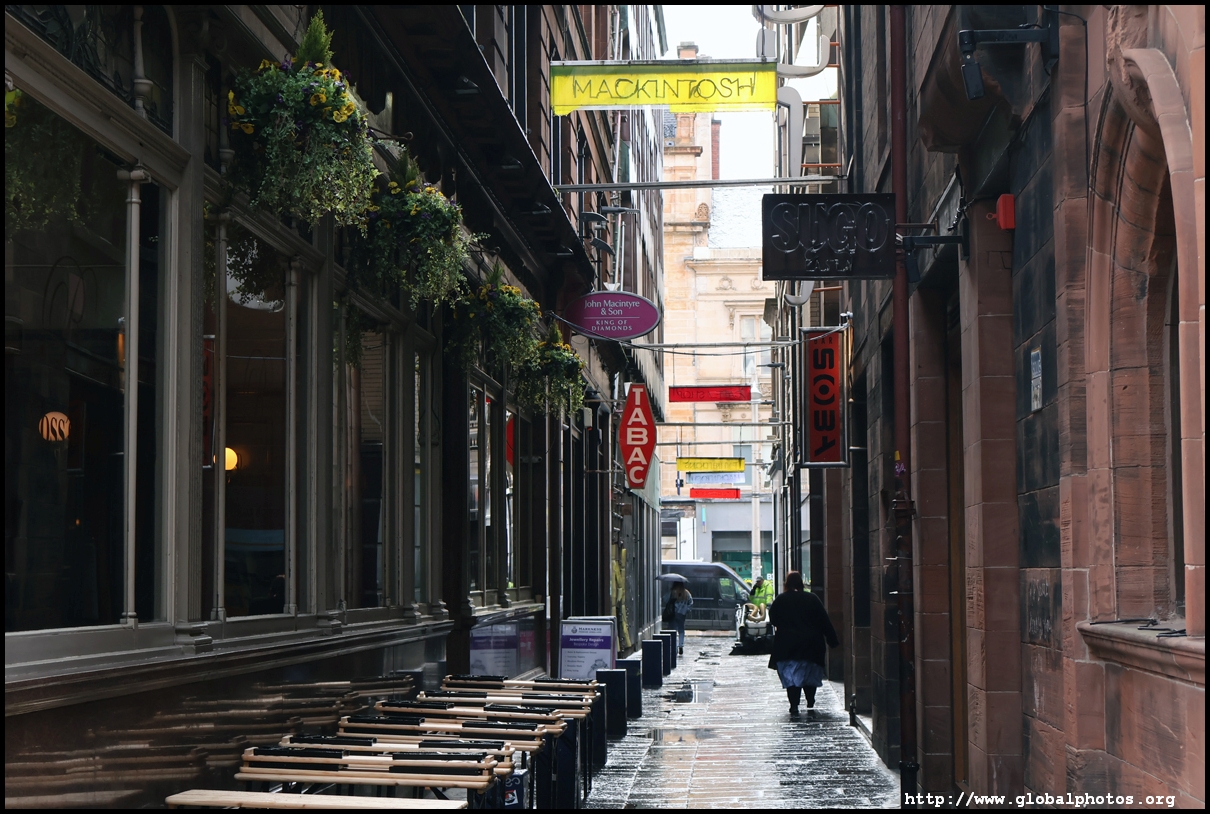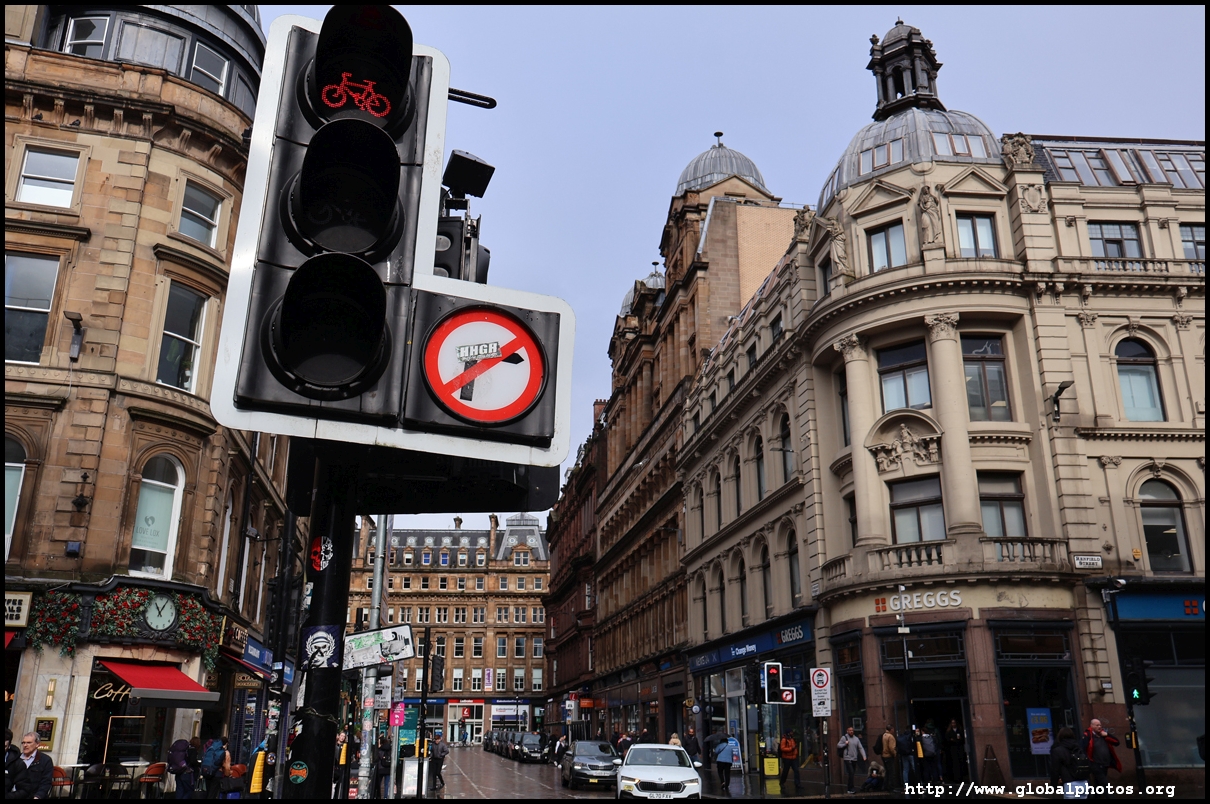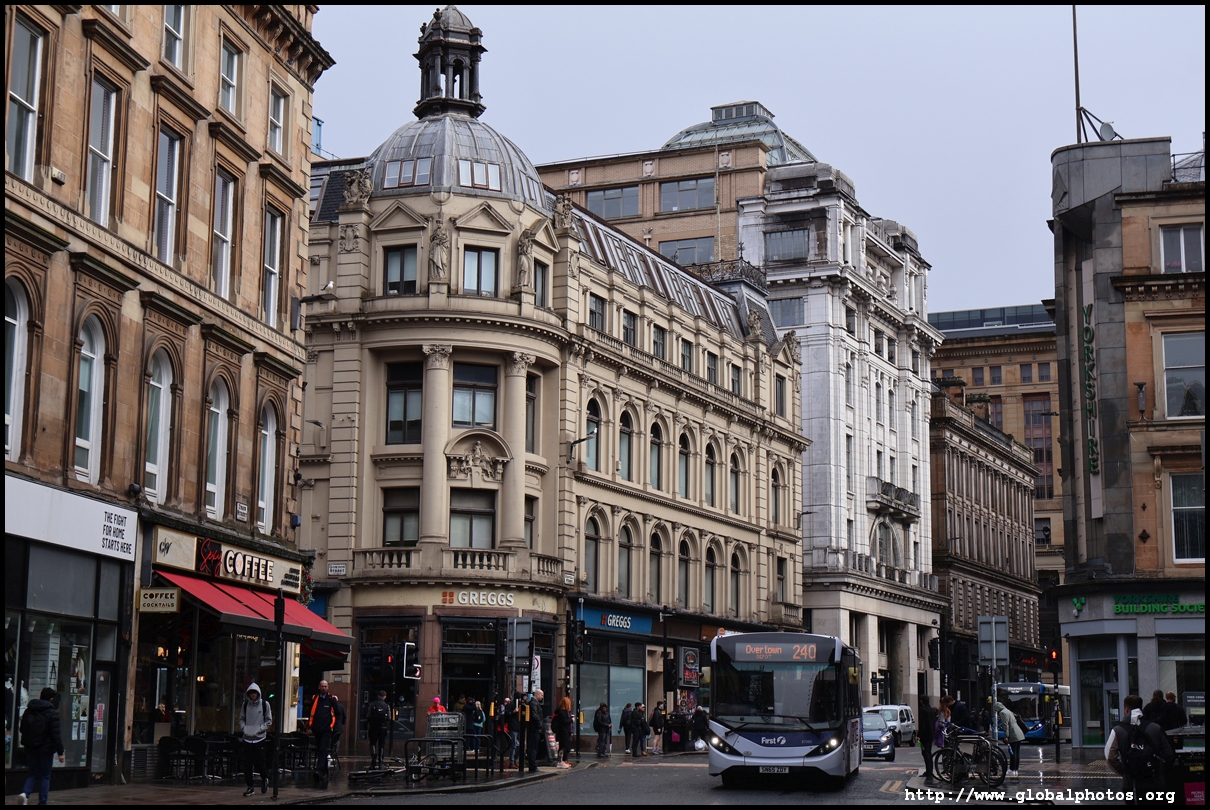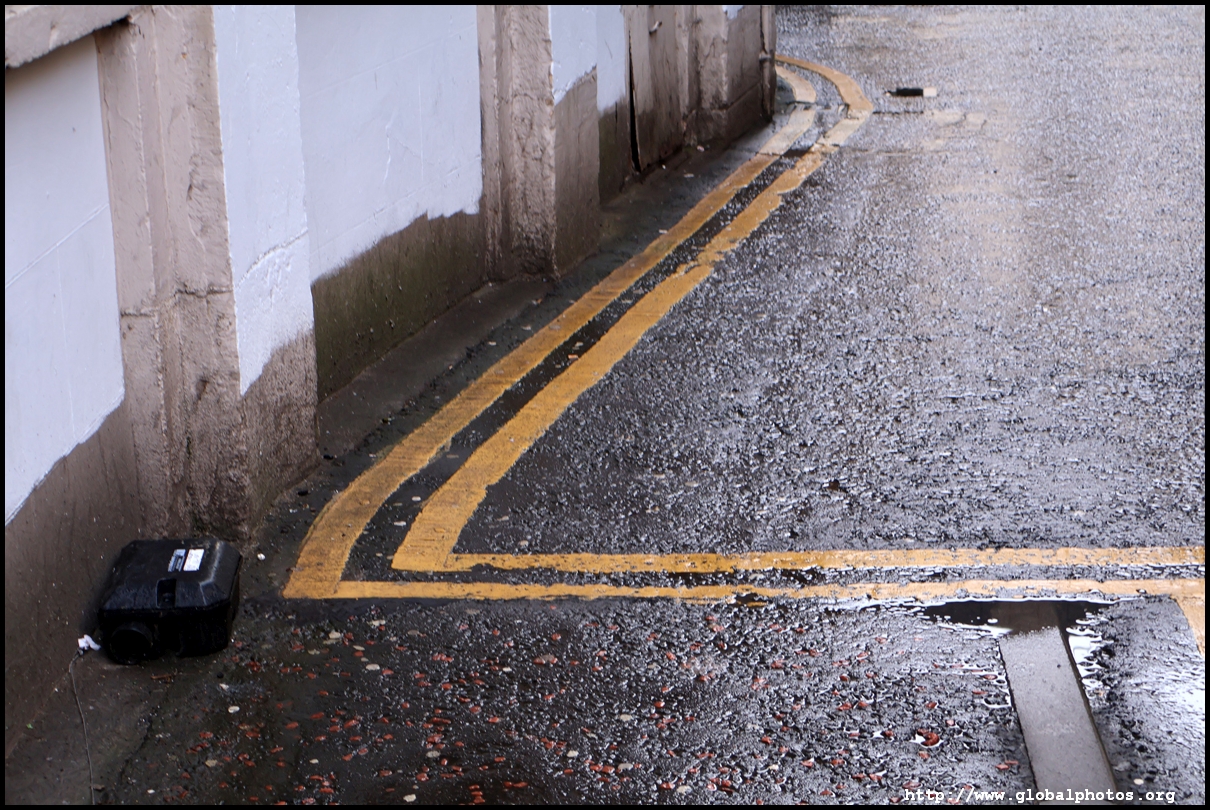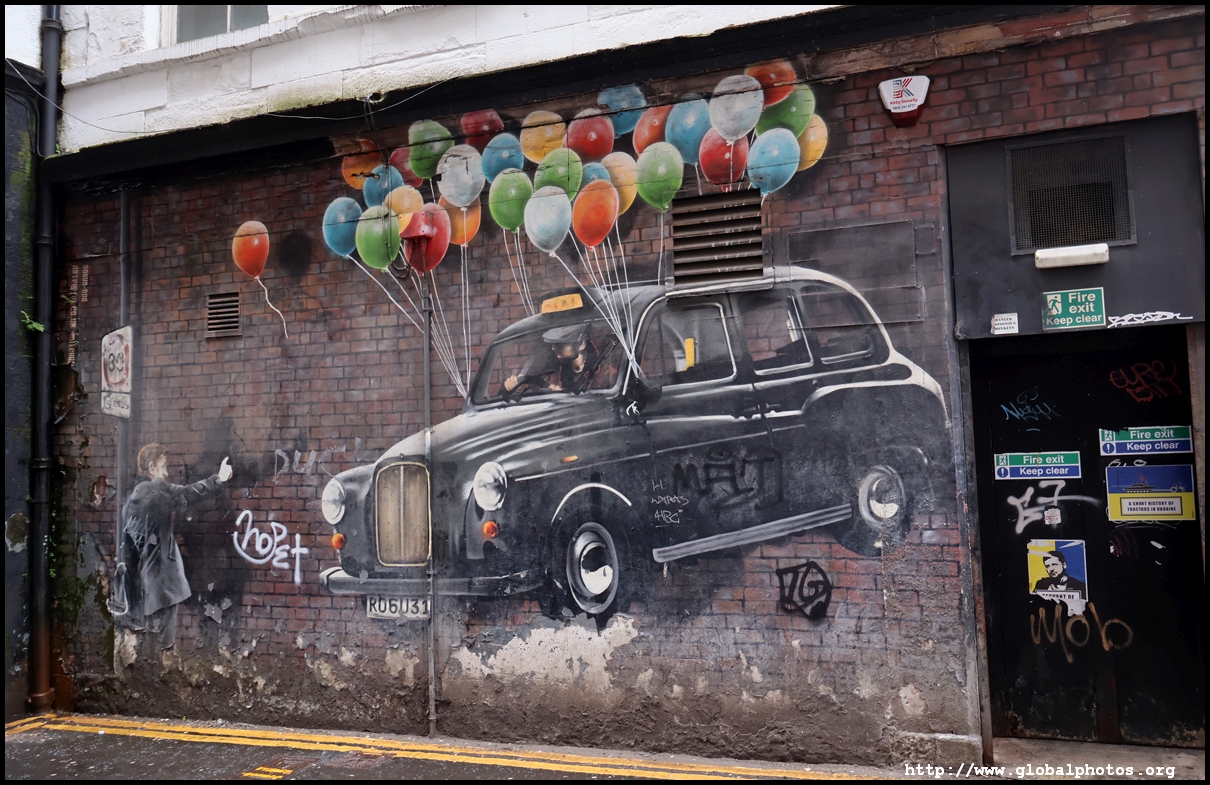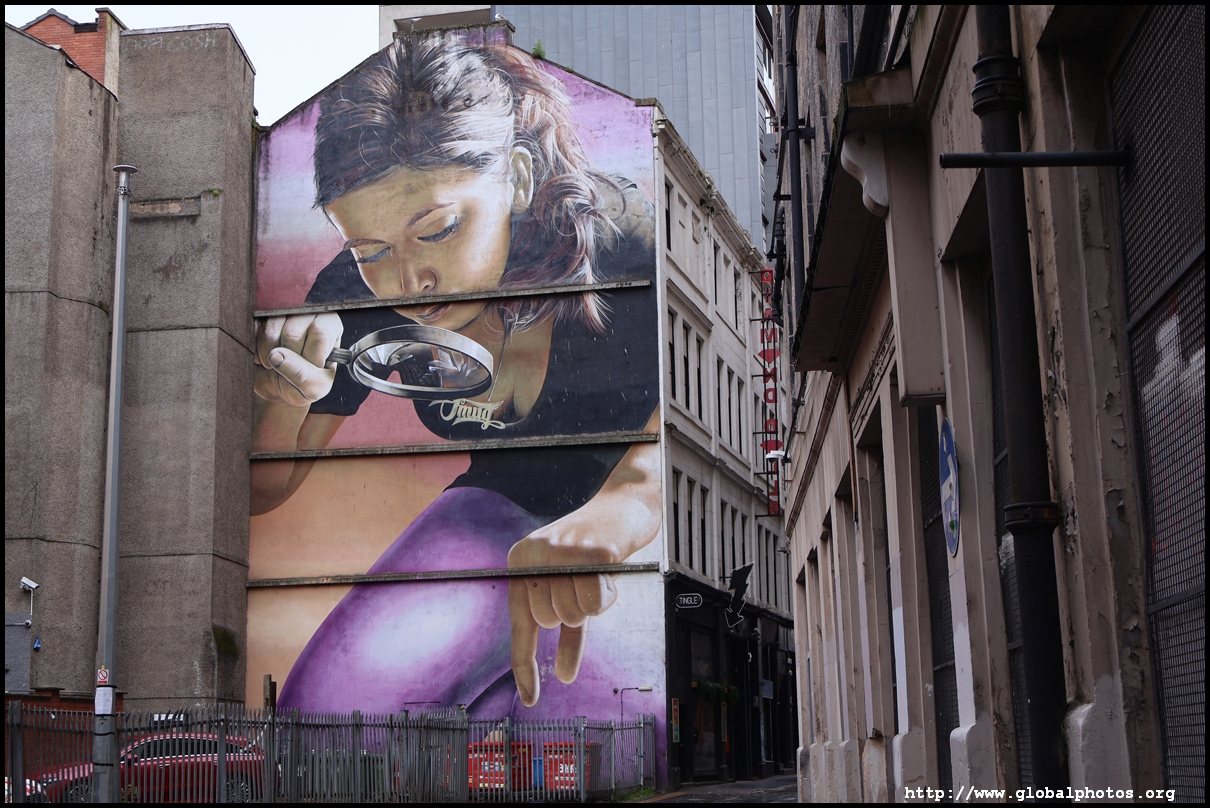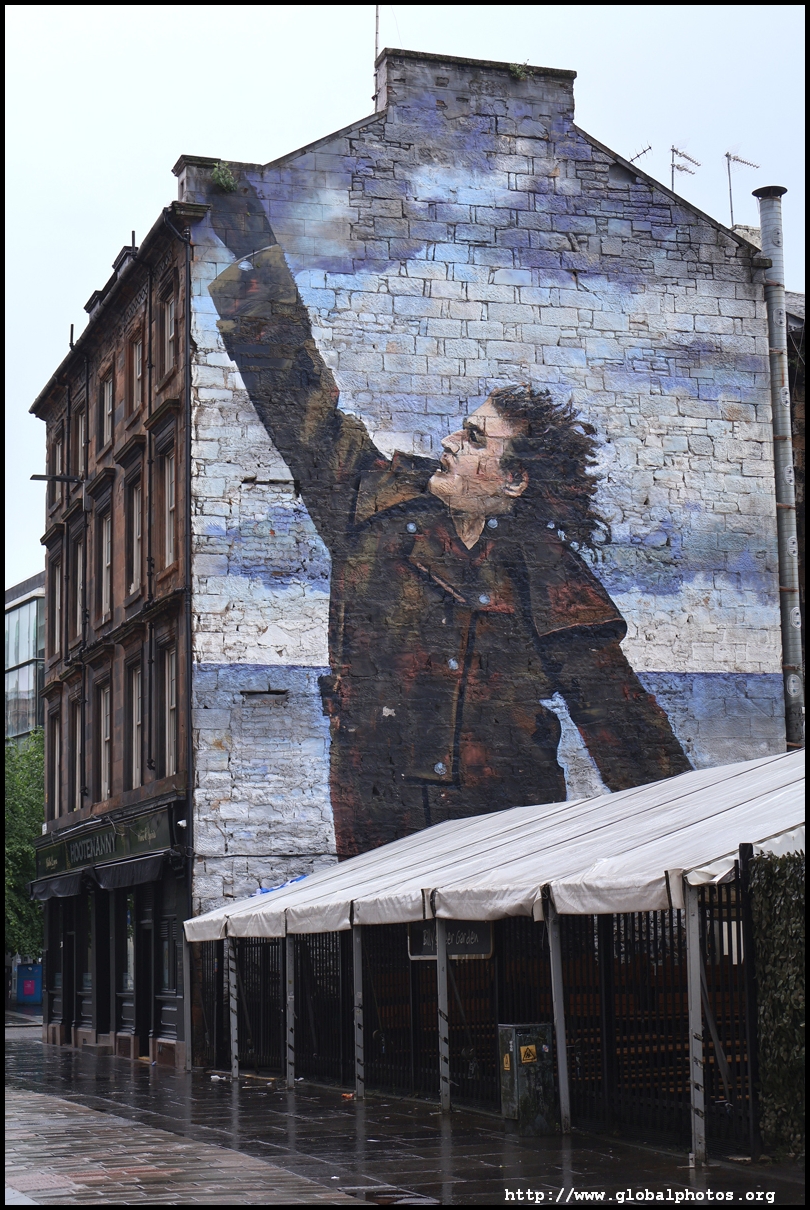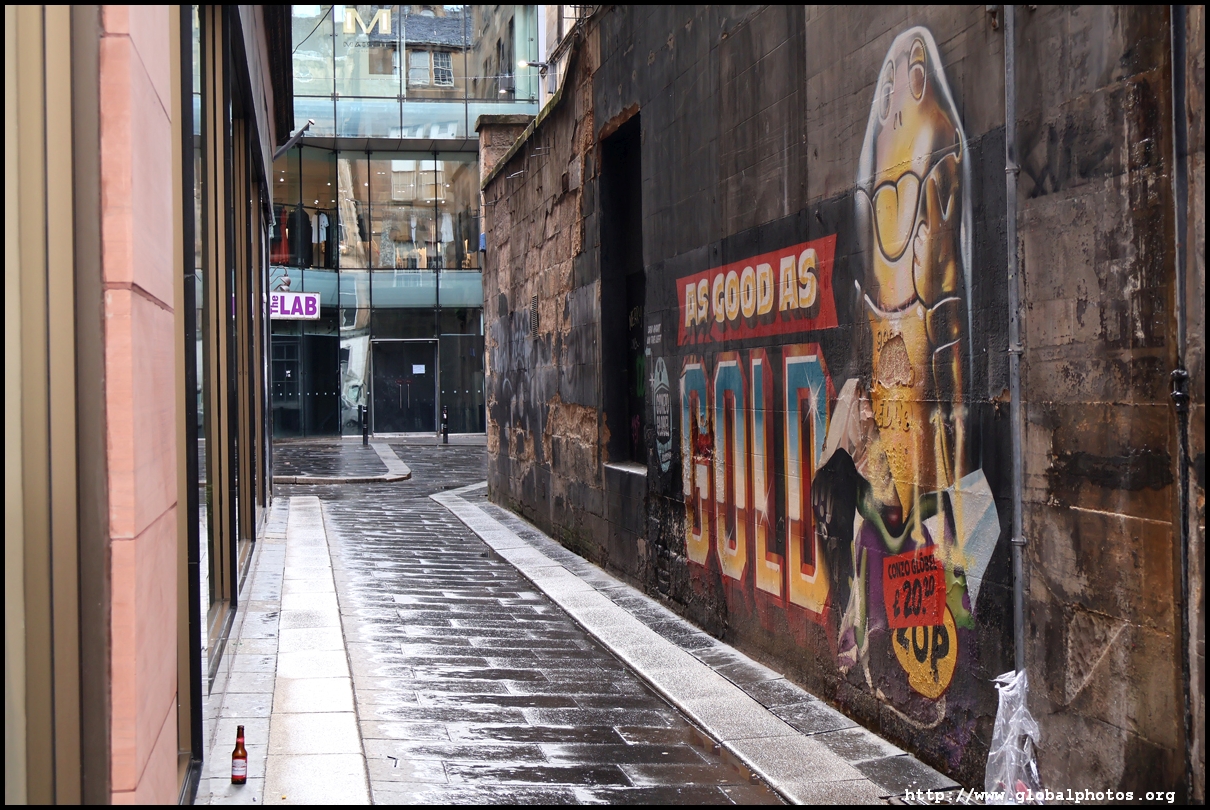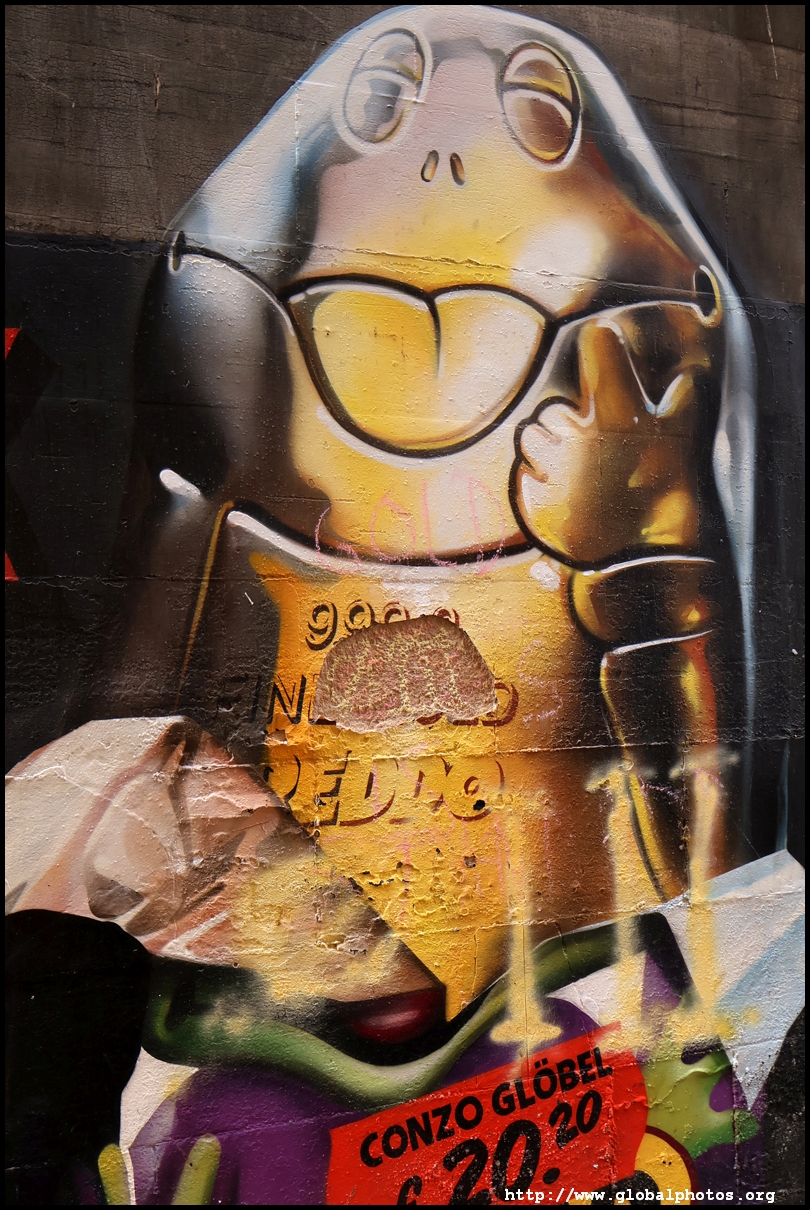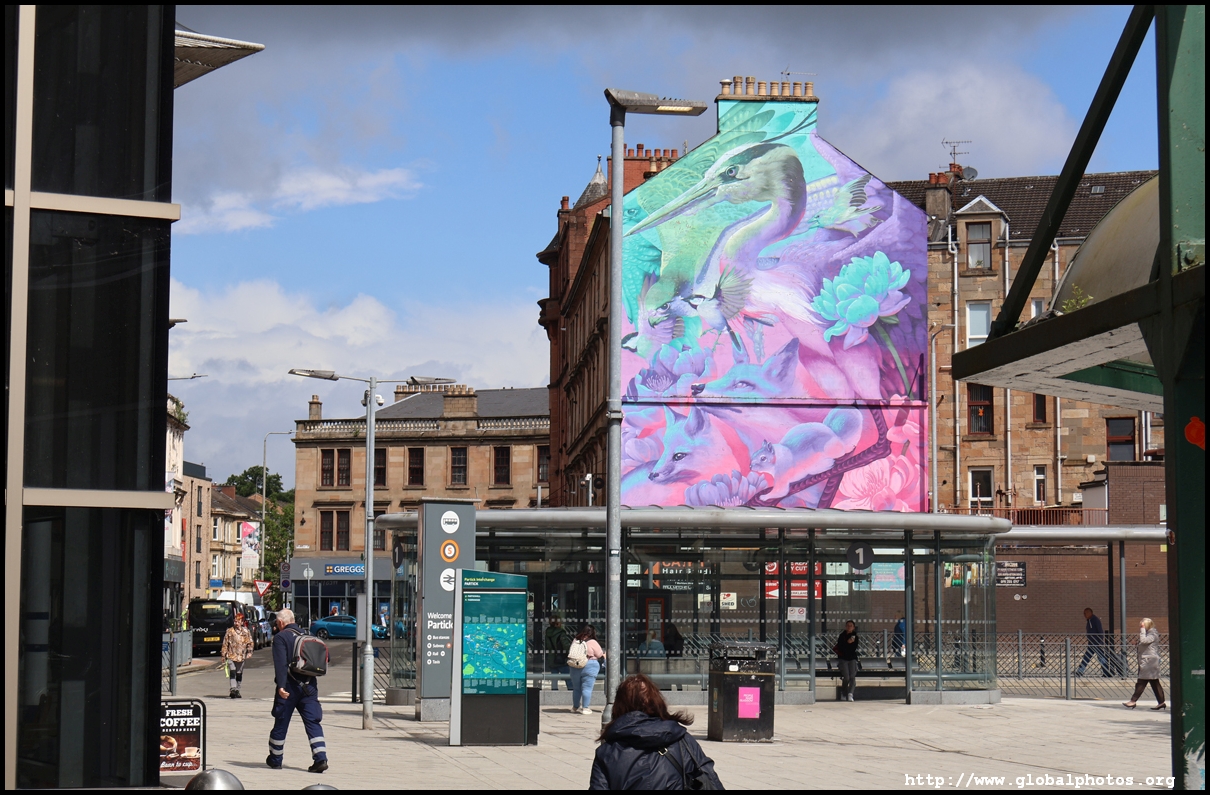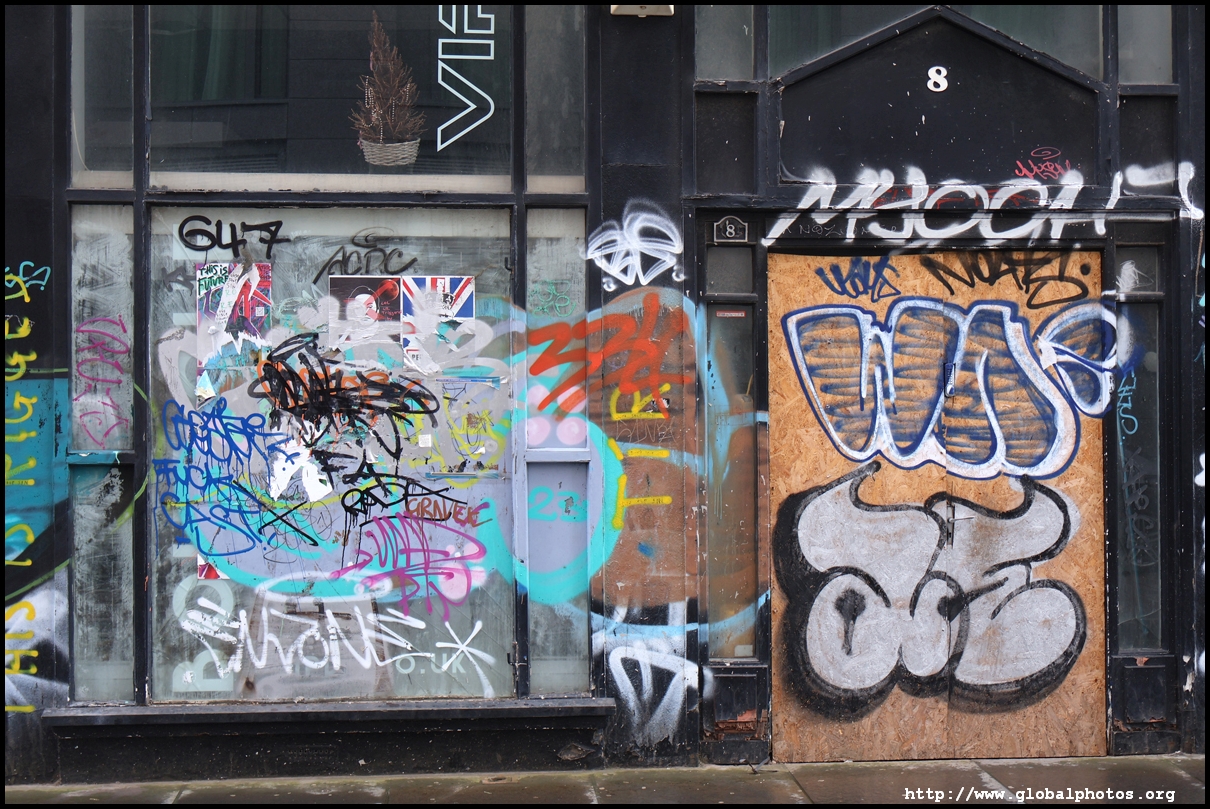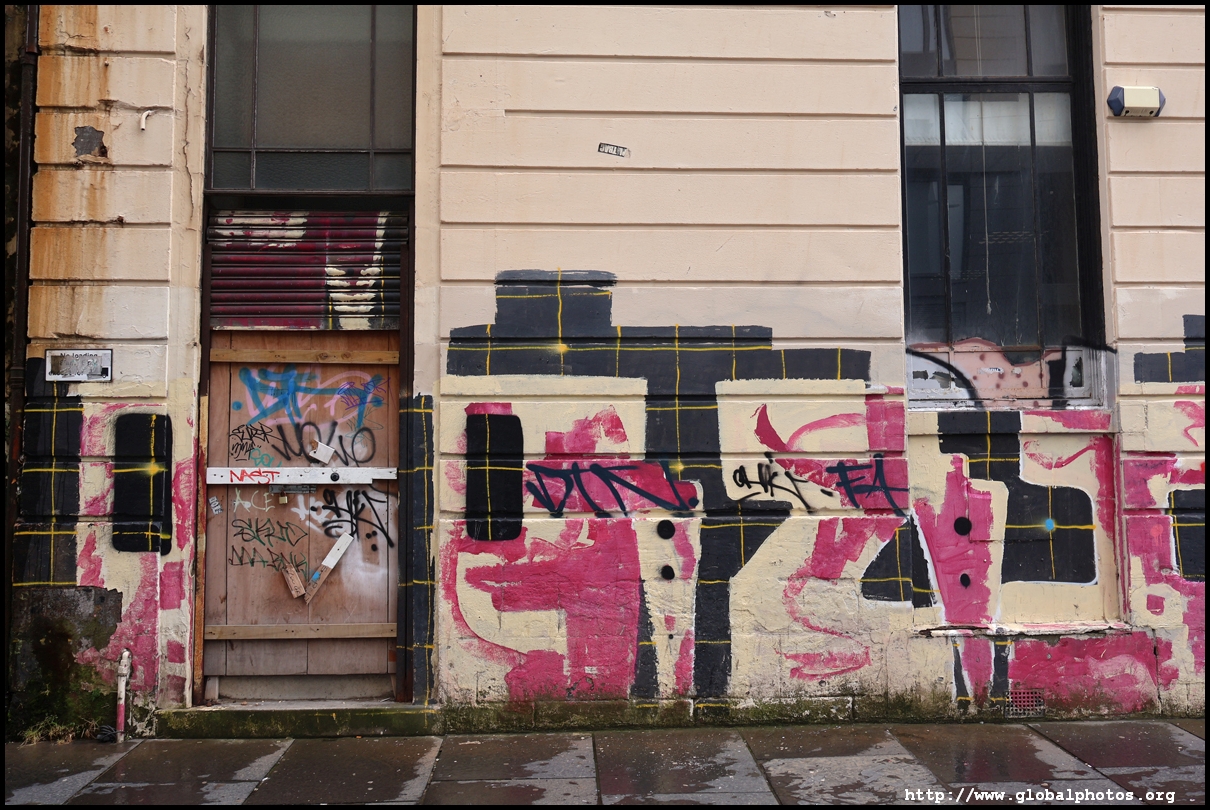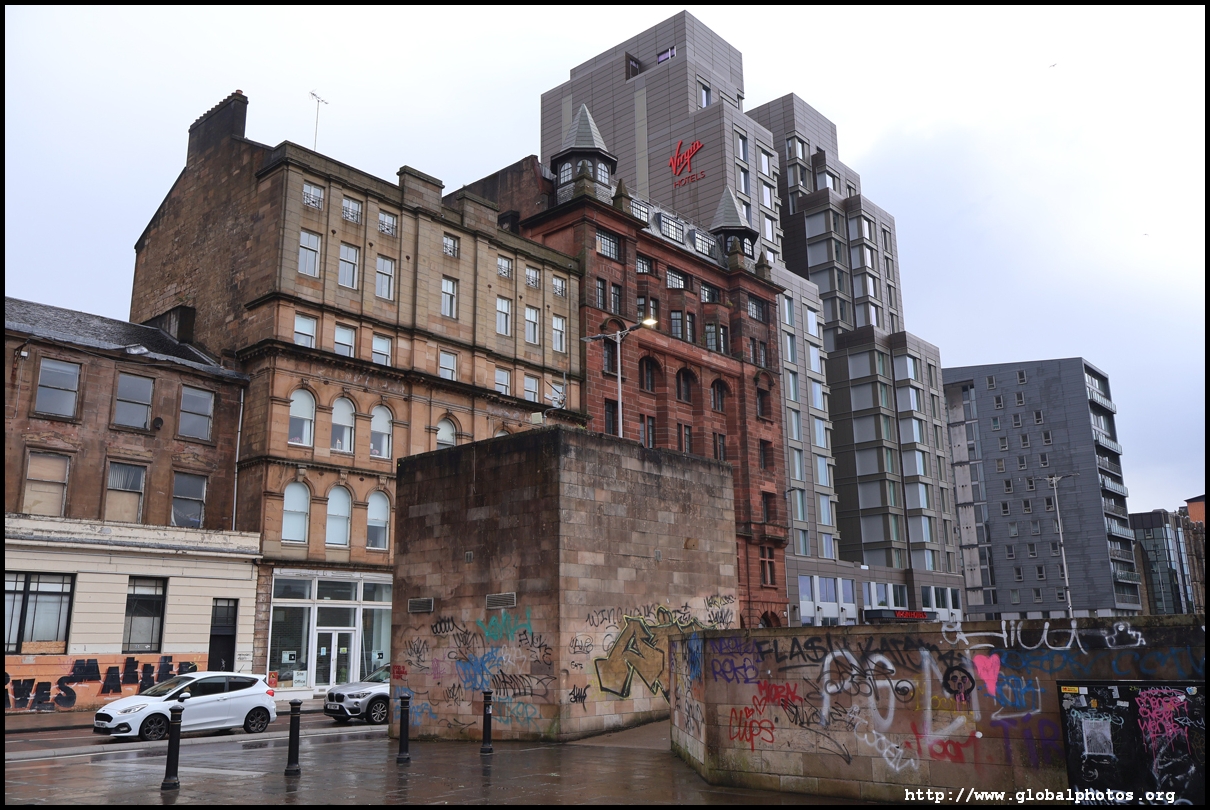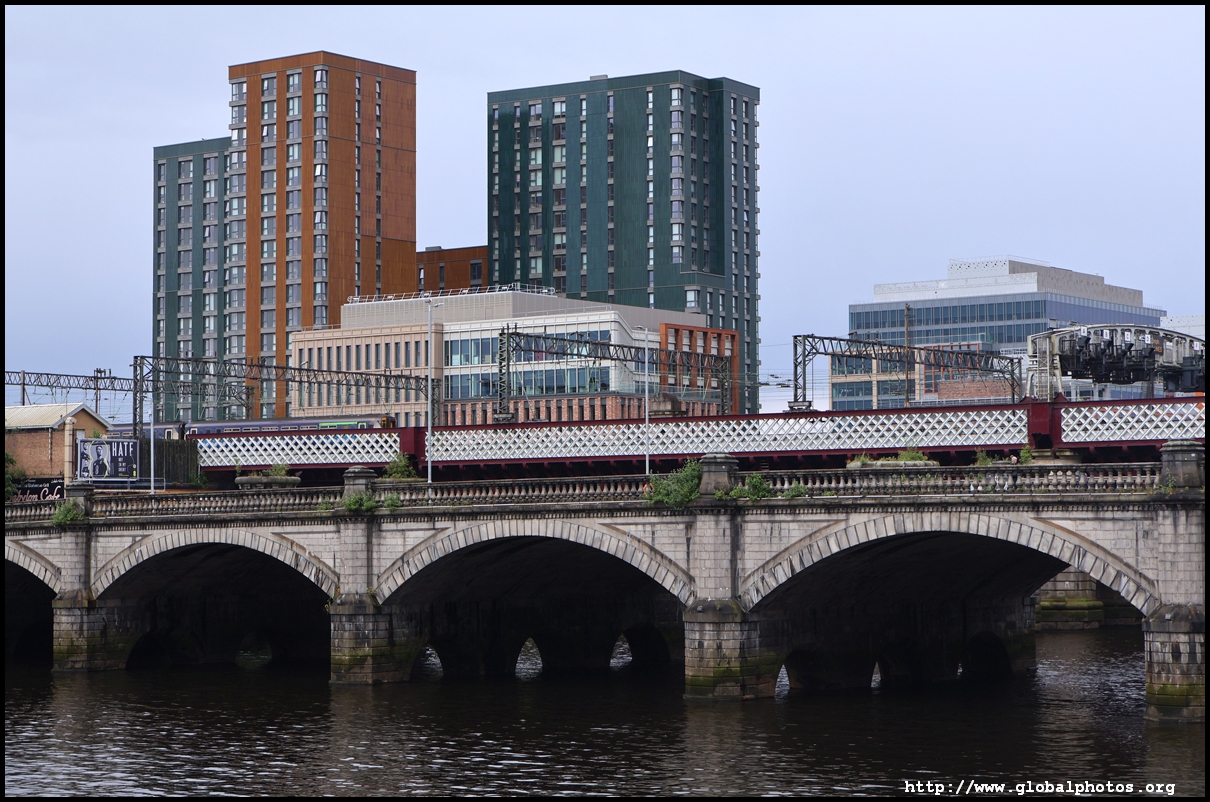Glasgow Street Scenes Photo Gallery
Besides the main tourist areas such as Buchanan and Argyle Streets, I explored the various blocks around the neighbourhood to find some hidden gems and surprises. The city centre is laid out in a grid format as it expanded out of the medieval cluster around Glasgow Cross. Merchant City was an 18th century expansion along straight lines and the city then grew along its rectangular land plots, which was uniquely driven by private development and not a civic plan.
The Museum of Modern Art occupies the former Royal Exchange building. It was originally home to William Cunninghame, a tobacco tycoon, when it was built in 1778. The Royal Bank of Scotland bought the home in 1817, followed by the city, when Greek and Roman pillars were added. The Royal Exchange was the place where merchants would meet to deal in various commodities and stocks. As the need for a central location to transact fell upon the invention of the telephone, the building became a library, followed by the art museum in 1996. The Duke of Wellington has had a cone over his head since the 1980s. Every time authorities took it away, another one soon returned.
A number of murals have gone up on sides of buildings or walls as well. The first art work on the city's mural trail was produced in 2008 and there is even an exploration trail available to download.
Debenhams closed in 2021 amidst the COVID pandemic and the city had granted permission to turn the building into offices and a rooftop restaurant. There is a wider redevelopment plan for the neighbourhood with 1700 new homes and a hotel at the St. Enoch Centre.
The Glasgow School of Art suffered 2 devastating fires in 2014 and 2018 which destroyed the art nouveau library and its restoration. The building is a work by famous Scottish architect Charles Rennie Mackintosh from the turn of the 20th century. Rebuilding has been delayed due to disputes with the insurers, which has gone to arbitration, hence the completion timeline is unknown.
Glasgow Central is Scotland's busiest train station. In 1840, the main train station was south of the river and operated by 2 companies. As the city grew in subsequent decades, the operators wanted to build a station closer to the city centre, but there was a lot of opposition to build a bridge across the river Clyde. Approval was finally obtained in 1873 and the new Central station opened in 1879. Expansion continued afterwards, and between April 2022 and March 2023, it handled almost 21 million passengers, making it Scotland's busiest and far exceeding the next busiest, Edinburgh Waverley.
The Clyde runs 170km into the Atlantic and was dredged and deepened to allow ships to sail into Glasgow during the trade and shipping heydays in the 18th century. Shipyards line the river downstream from Glasgow and once produced 1/3 of all British ship production from the 1860s but were badly affected by foreign competition after World War II.
|
